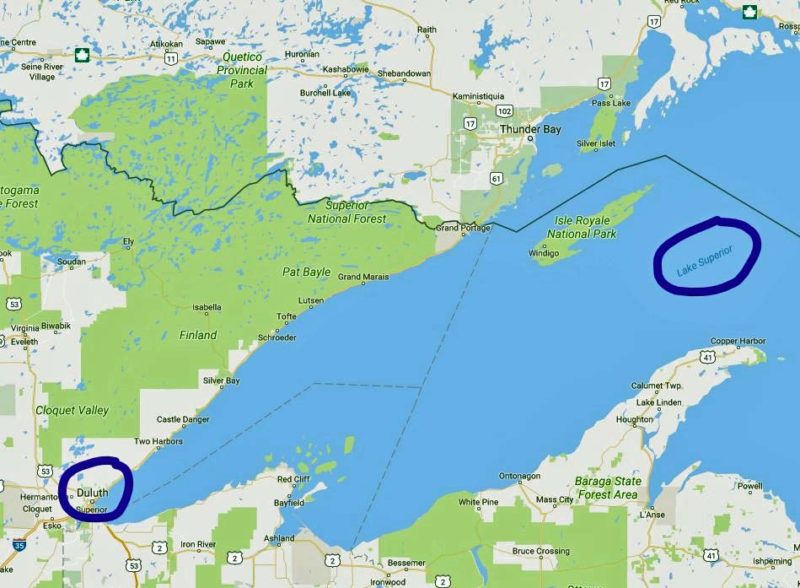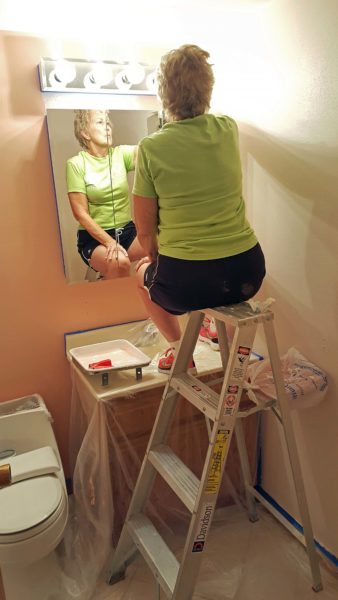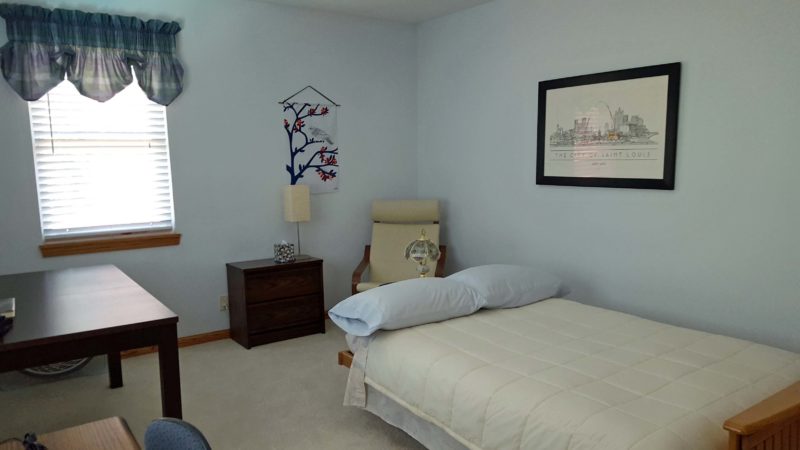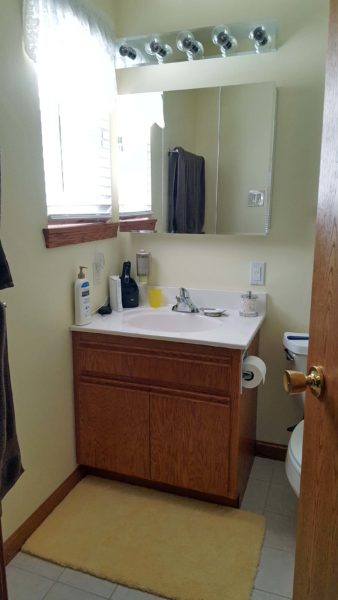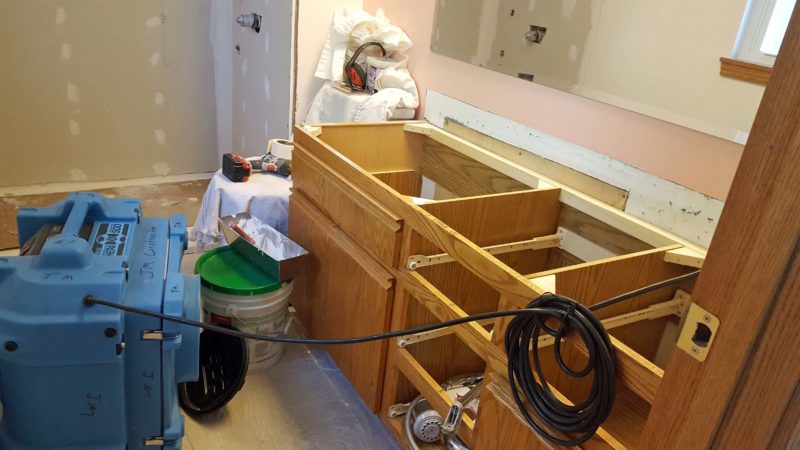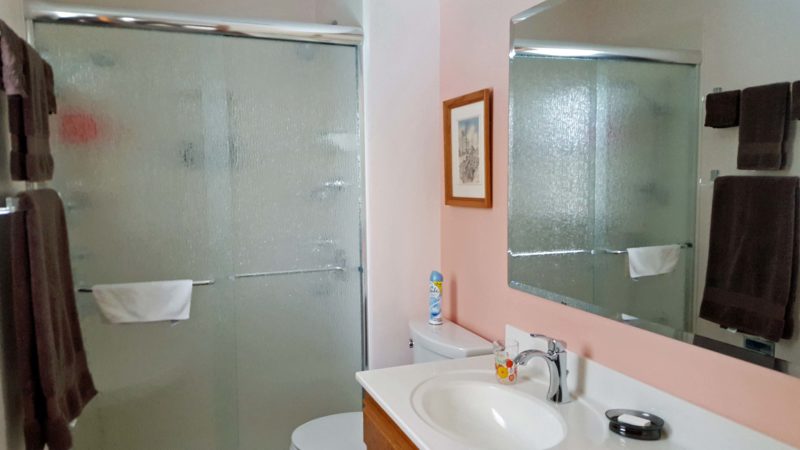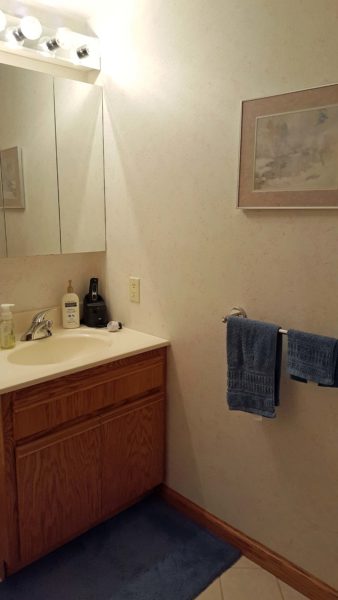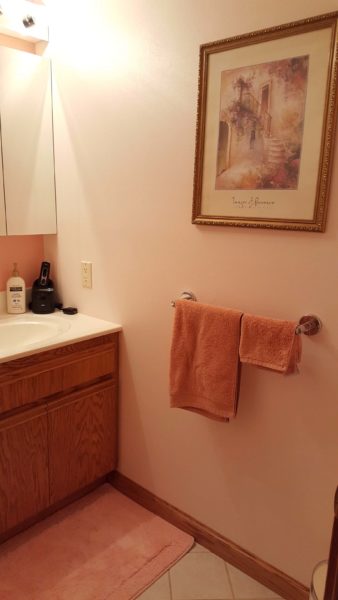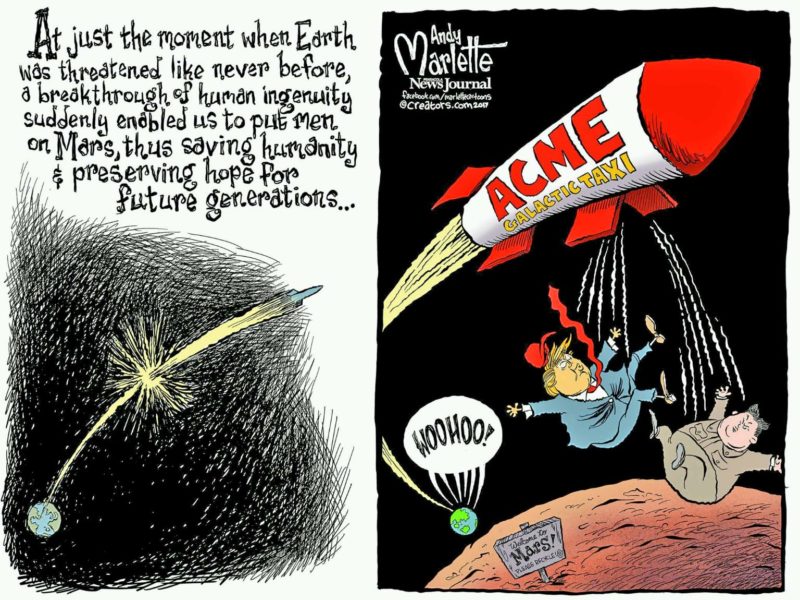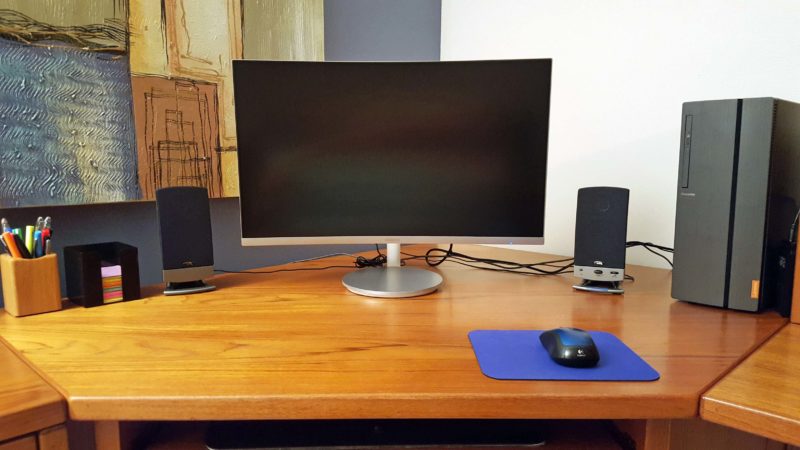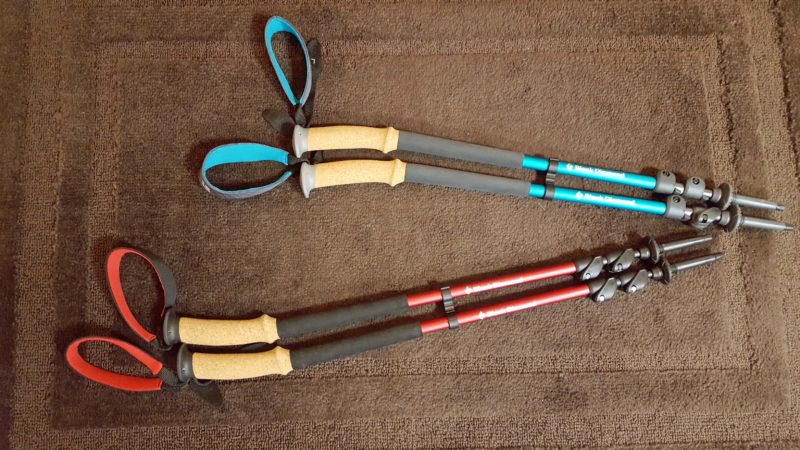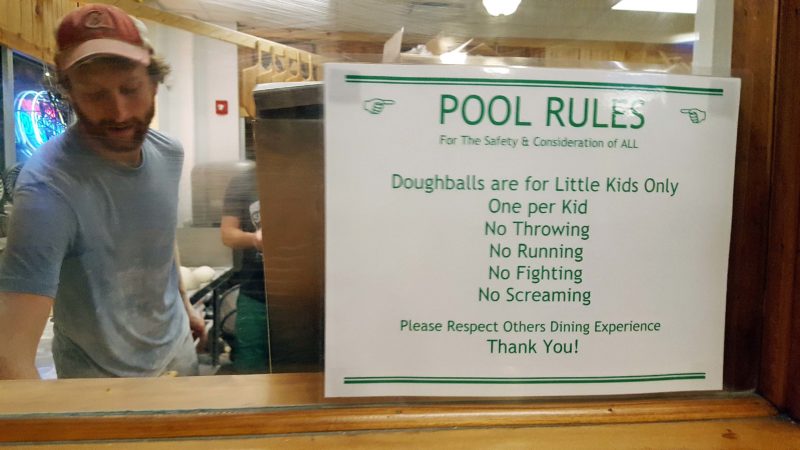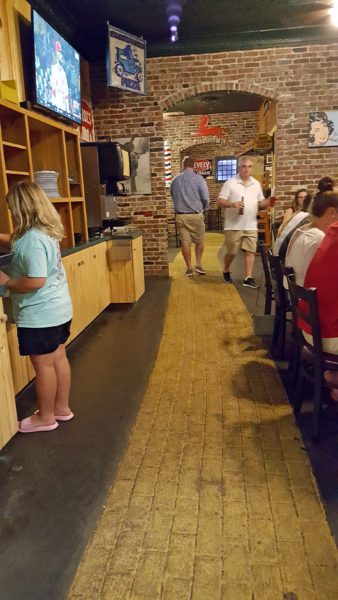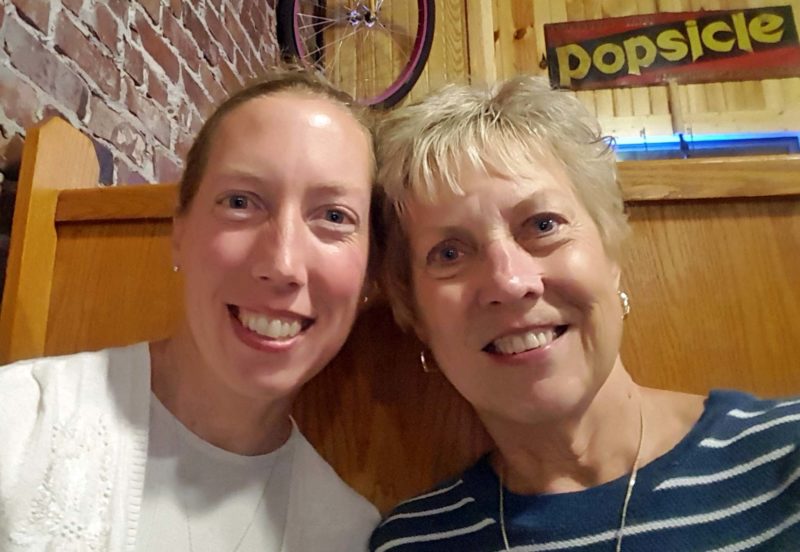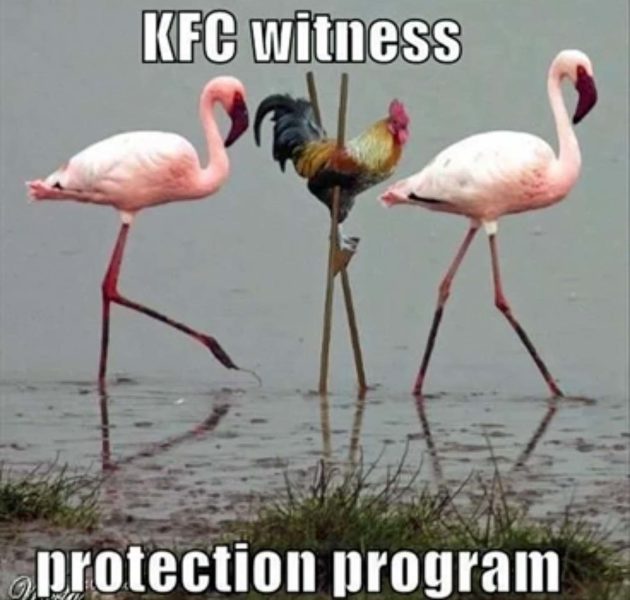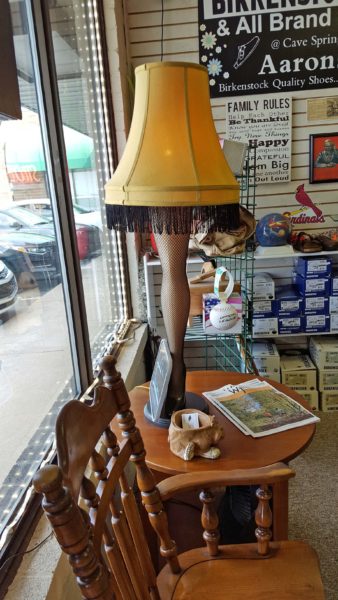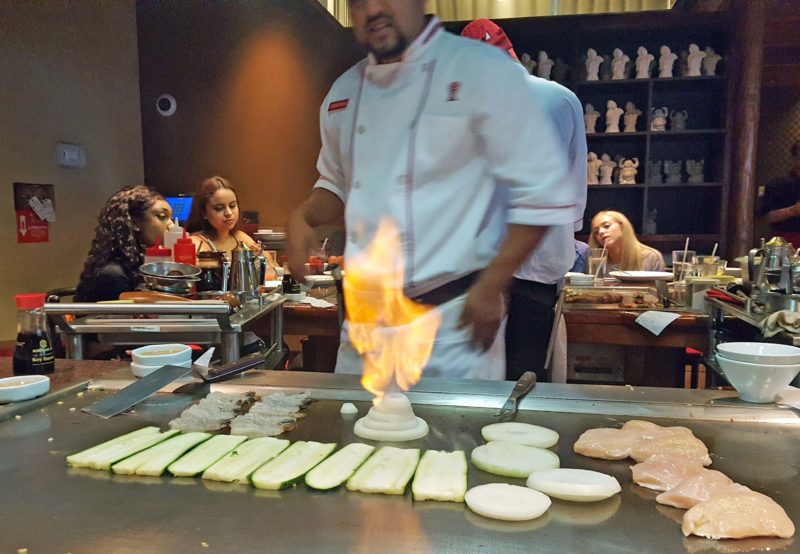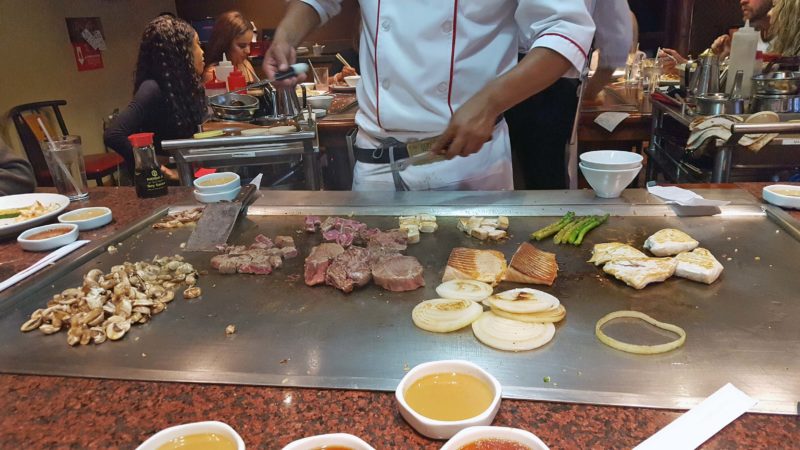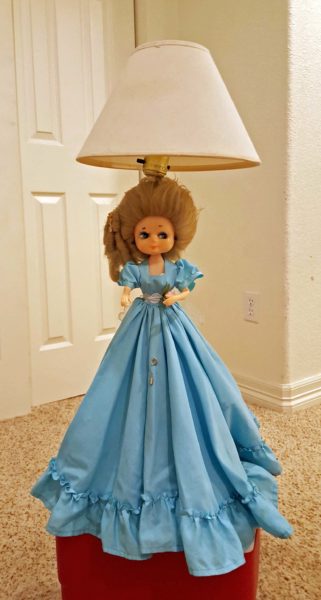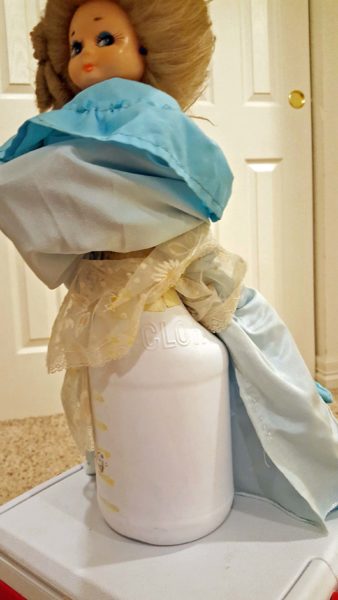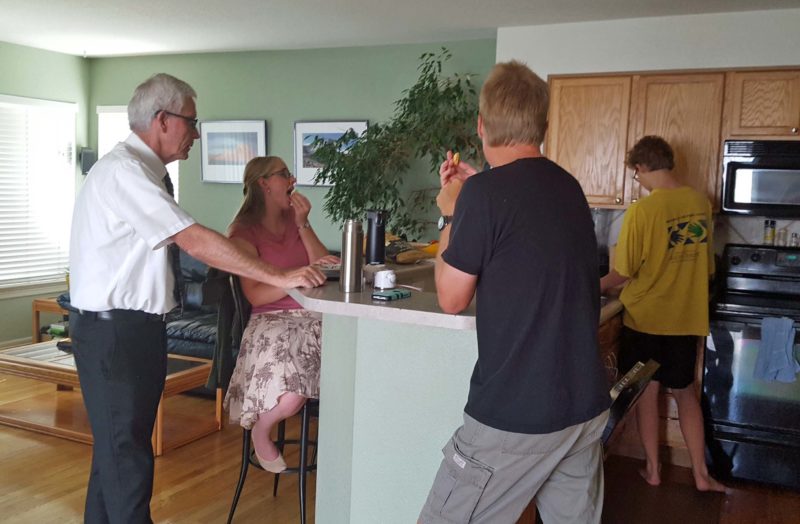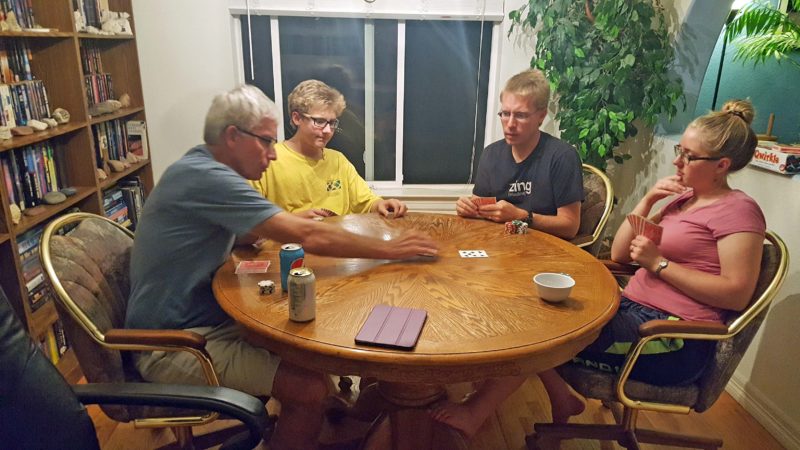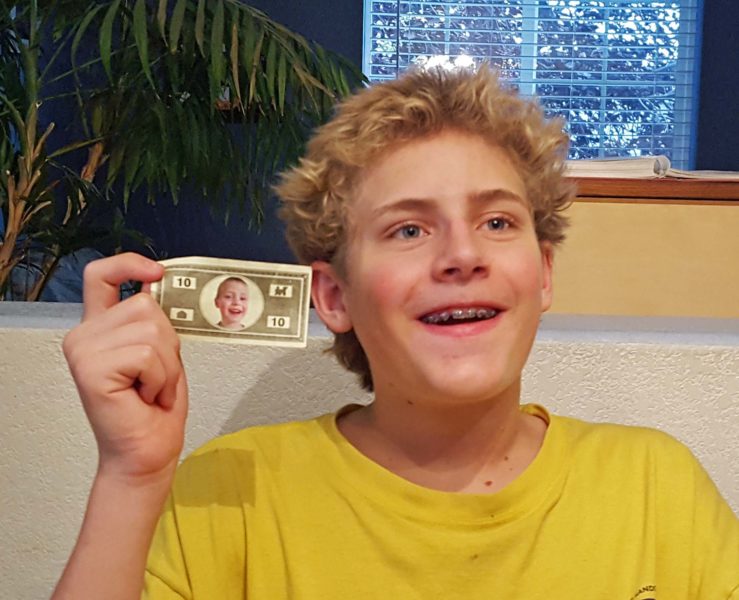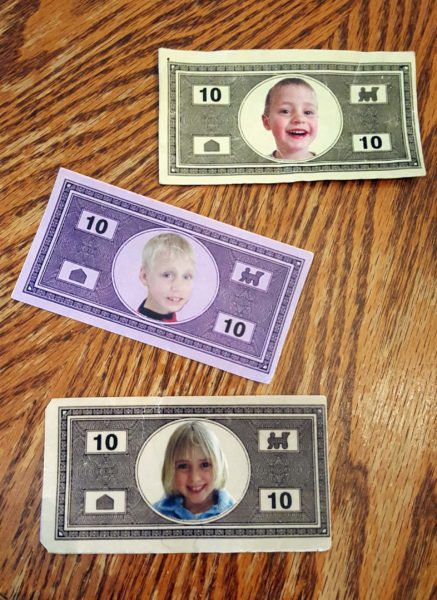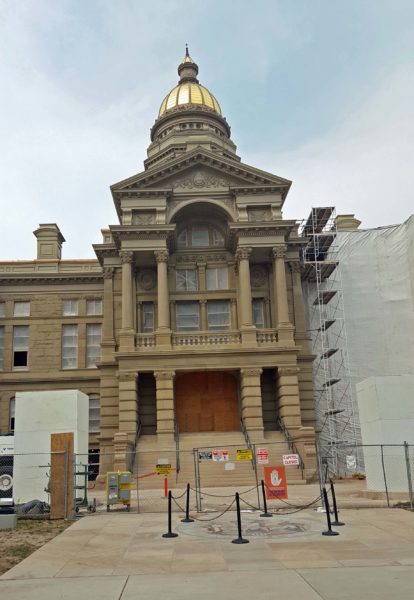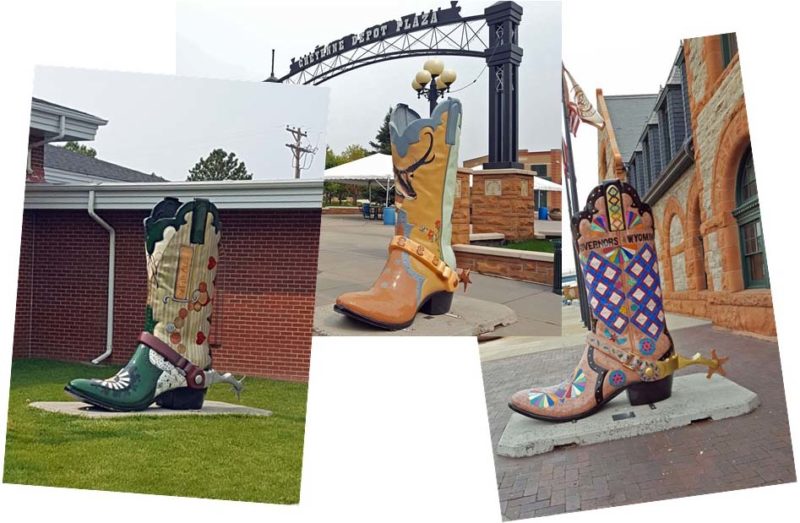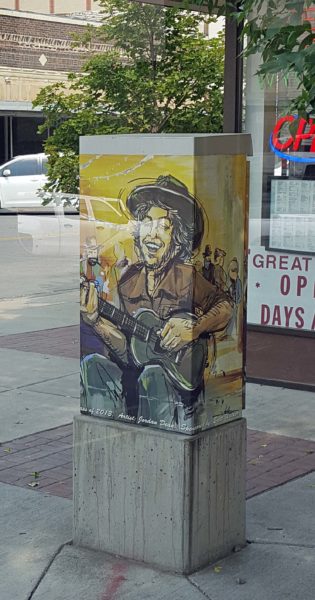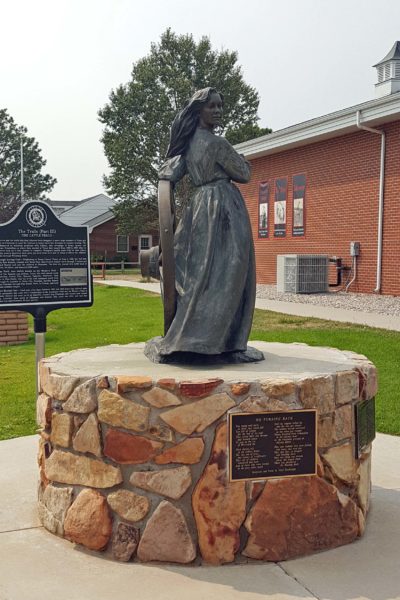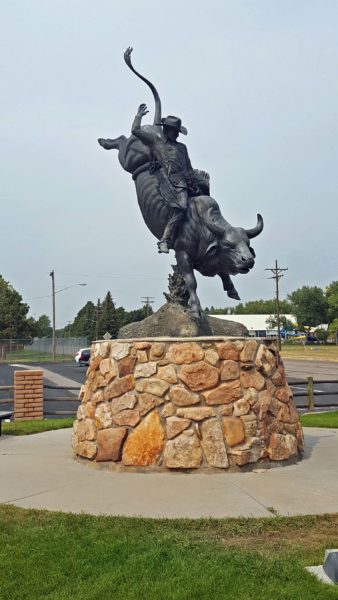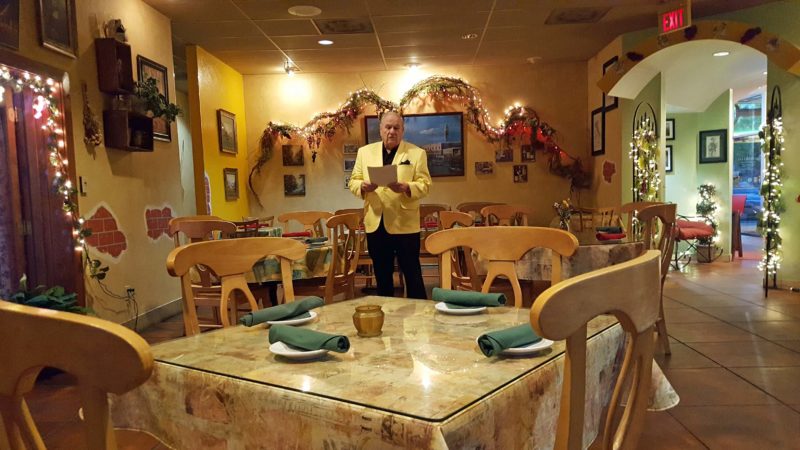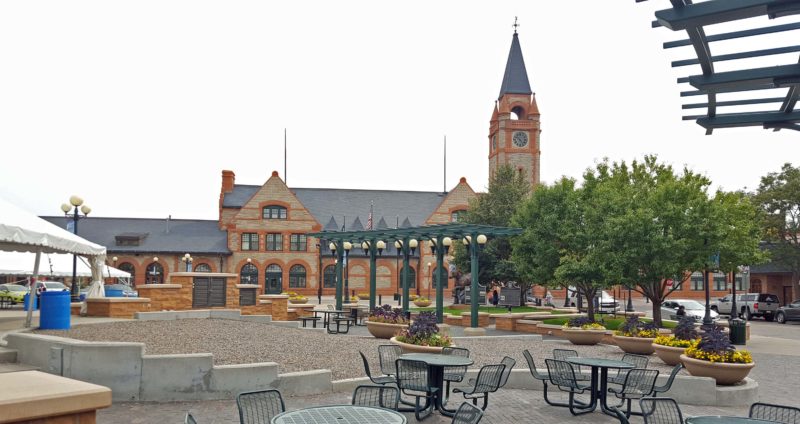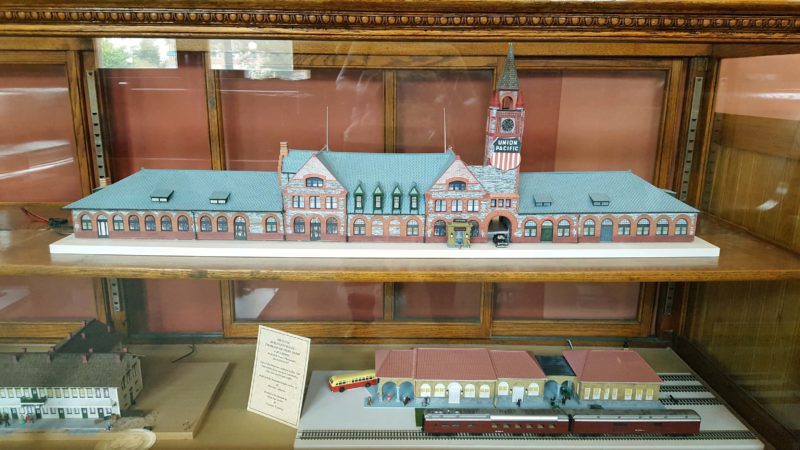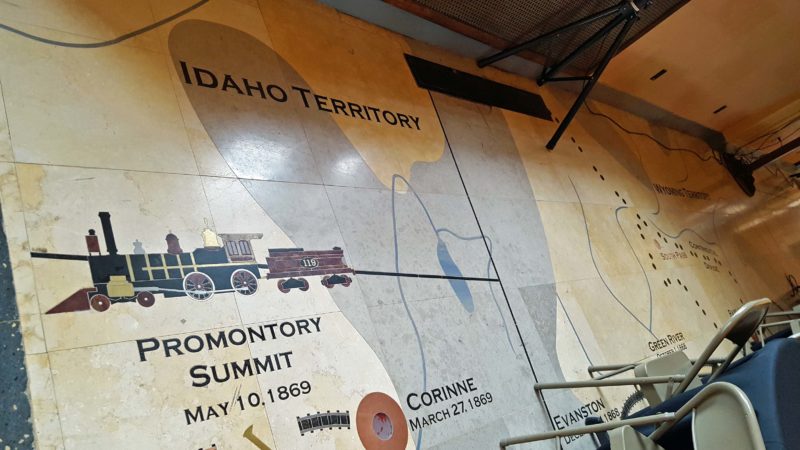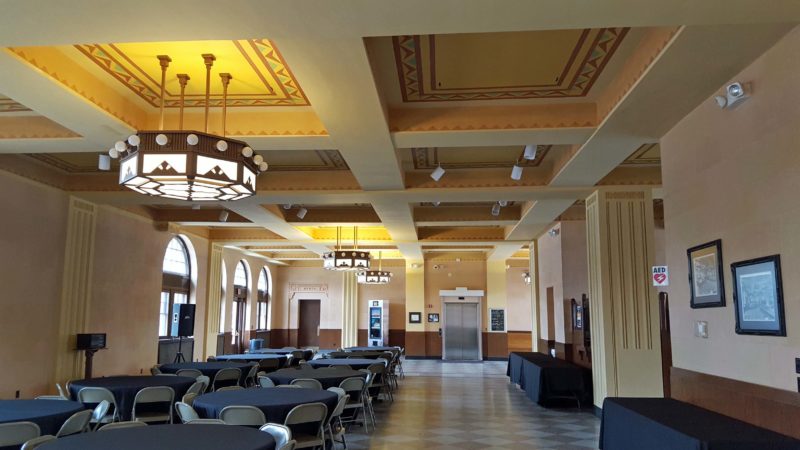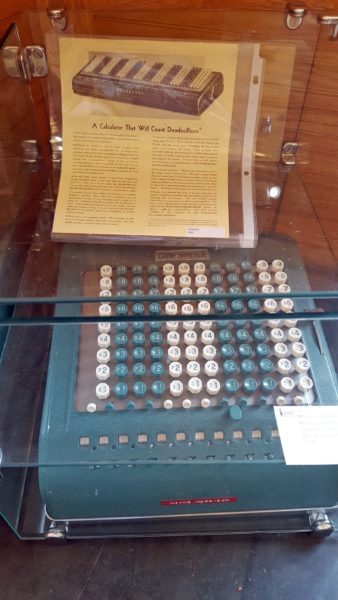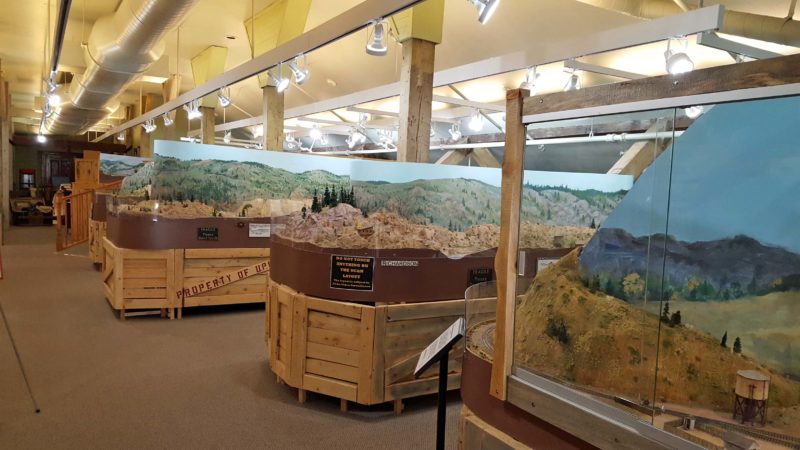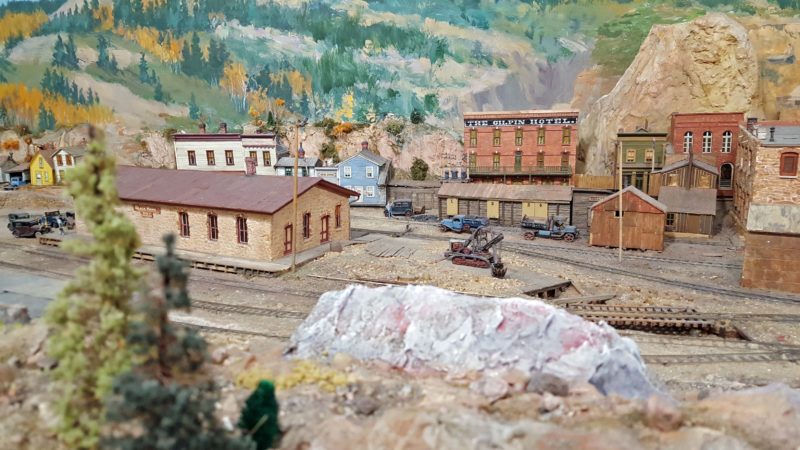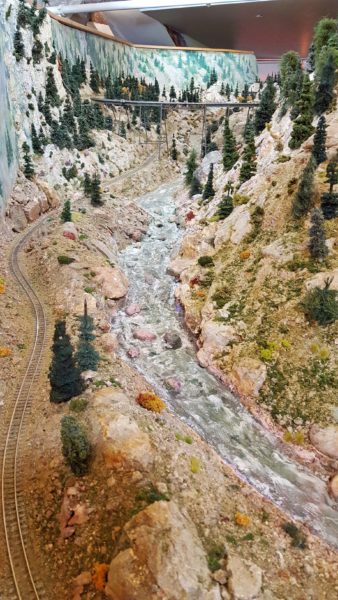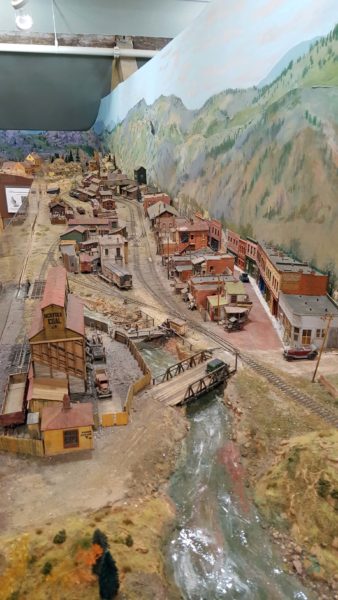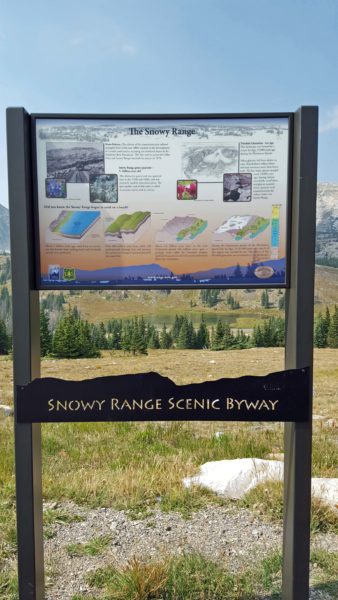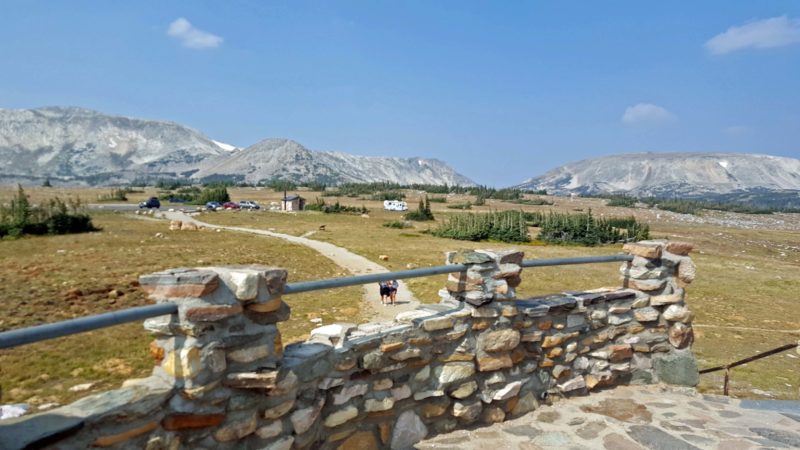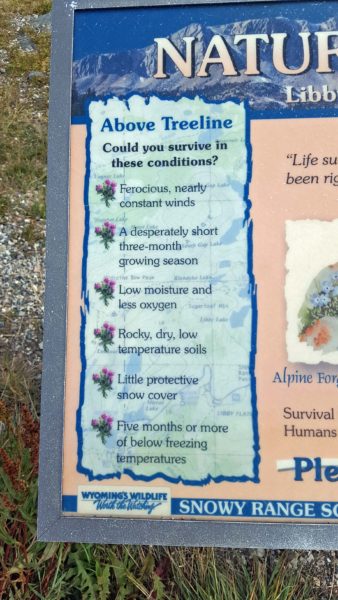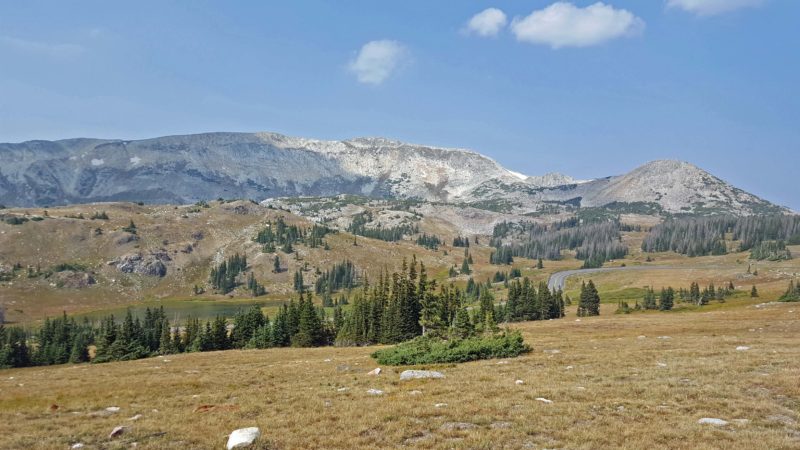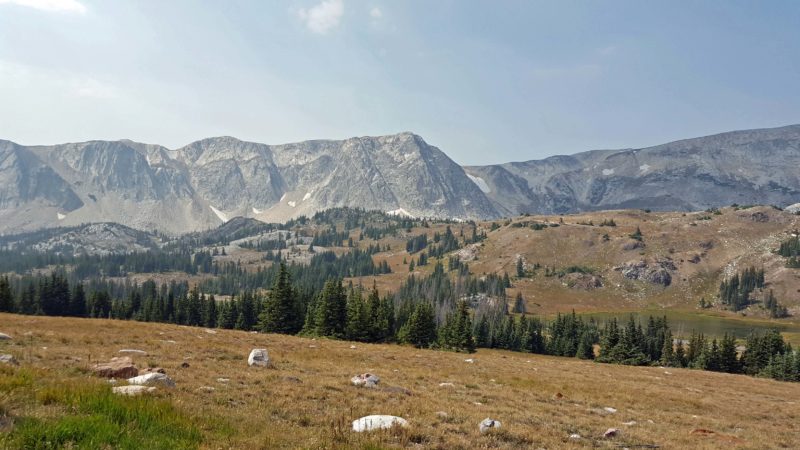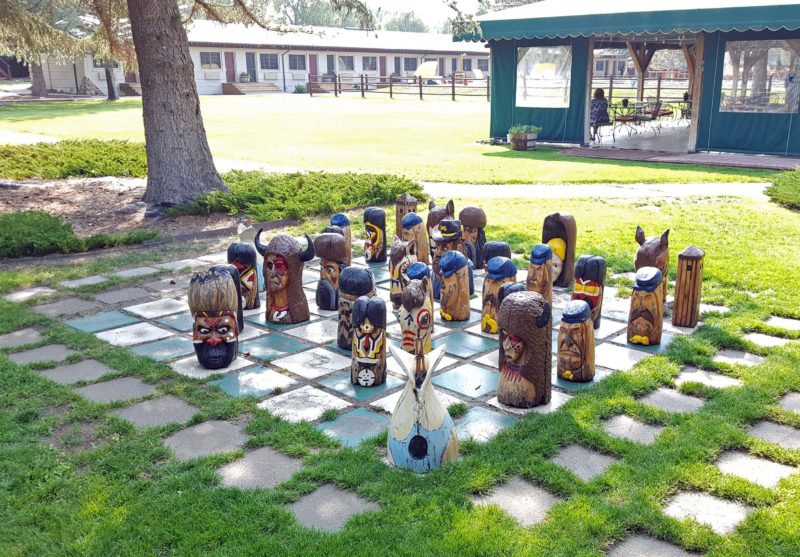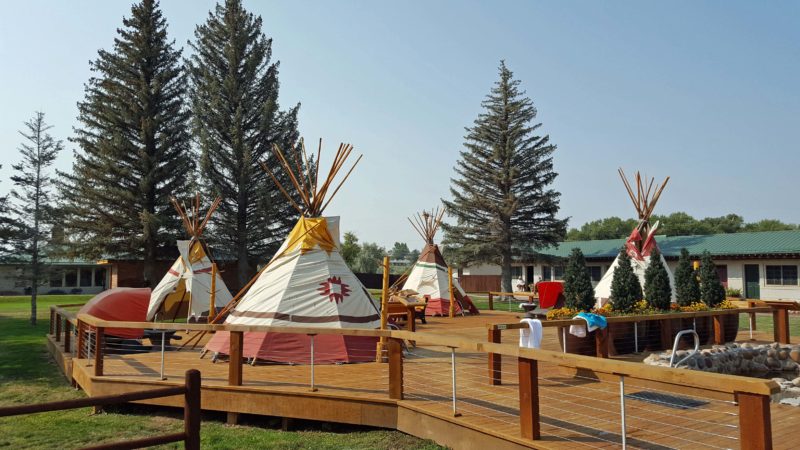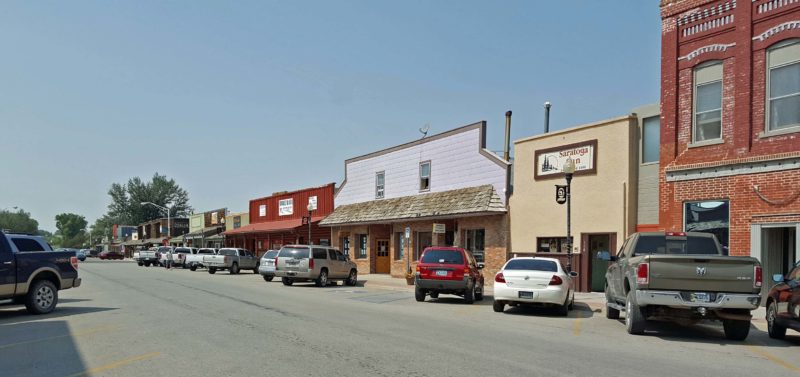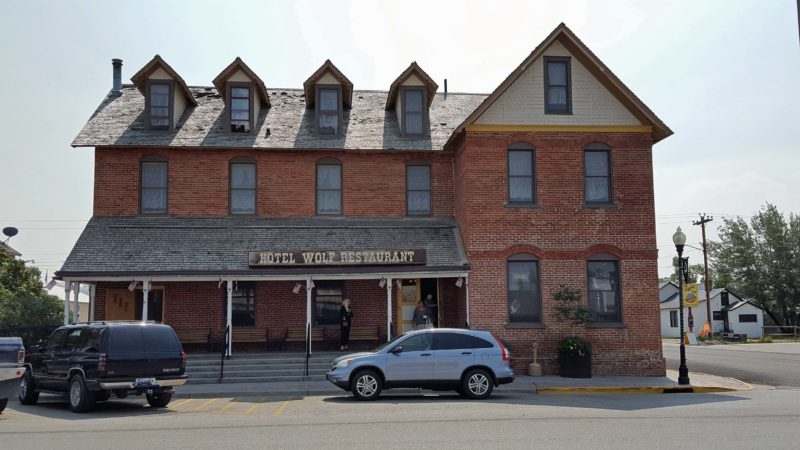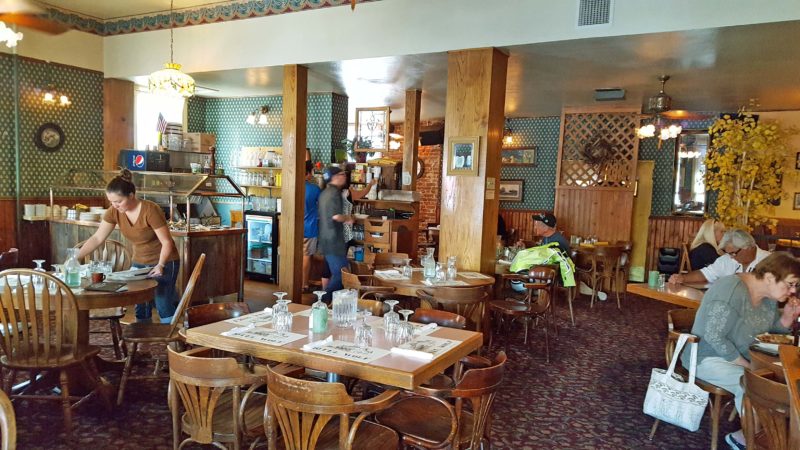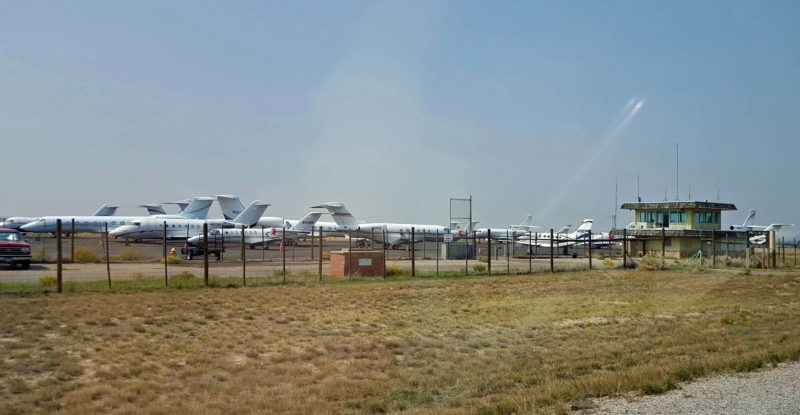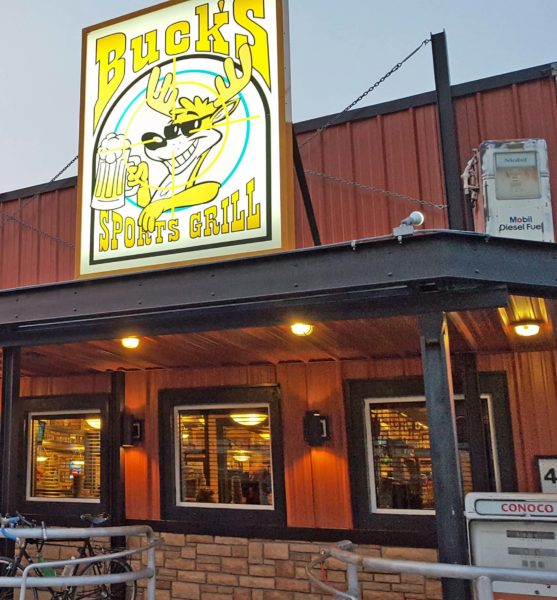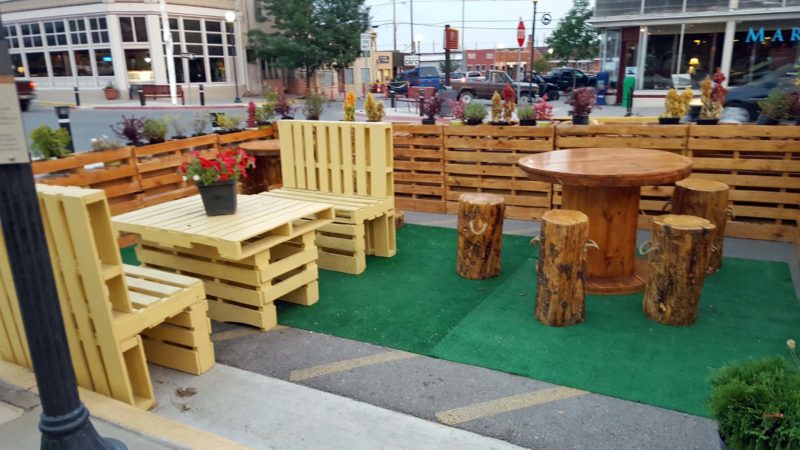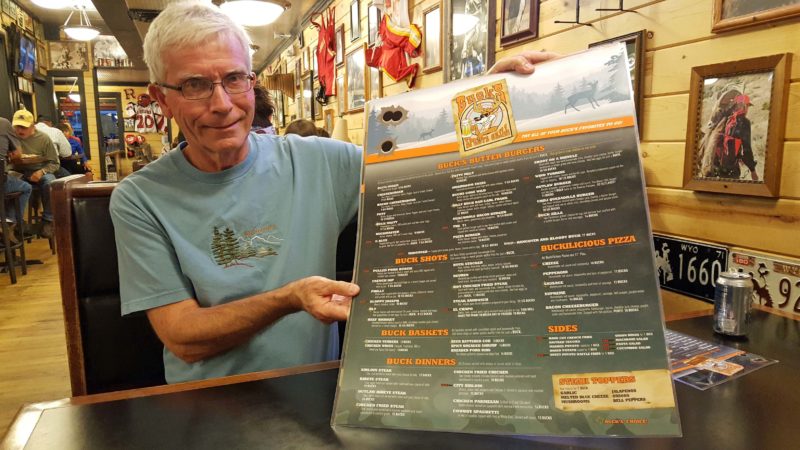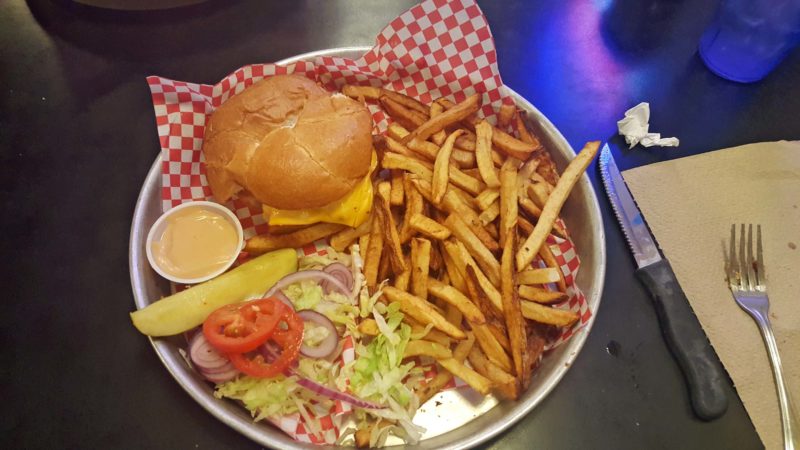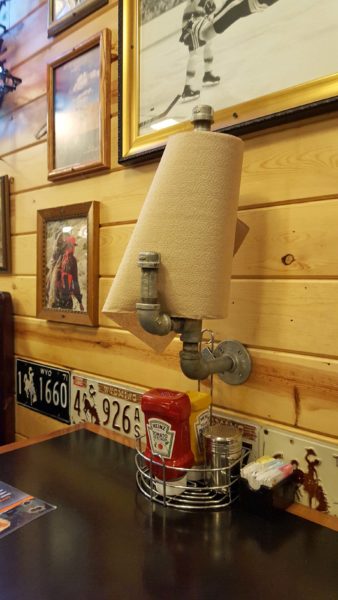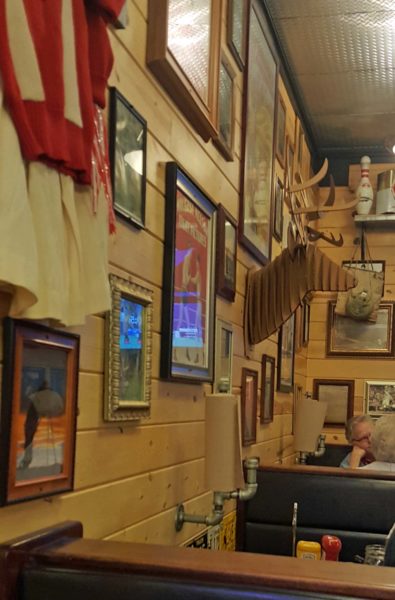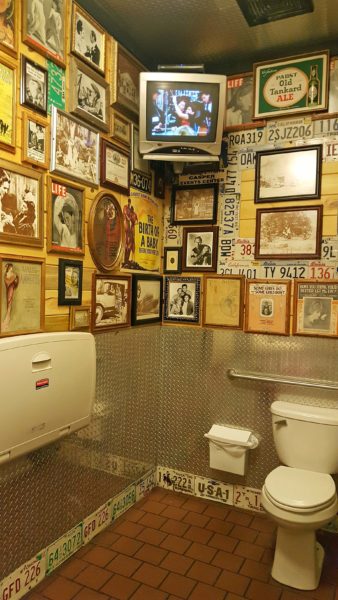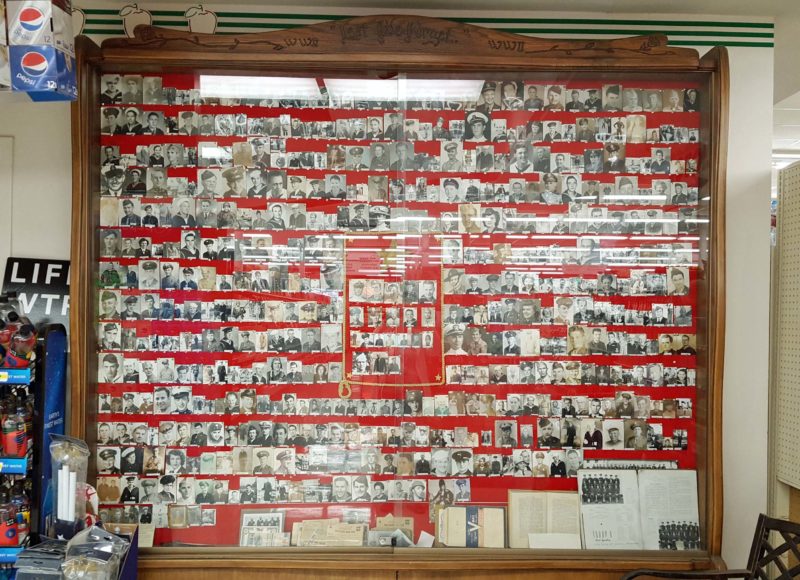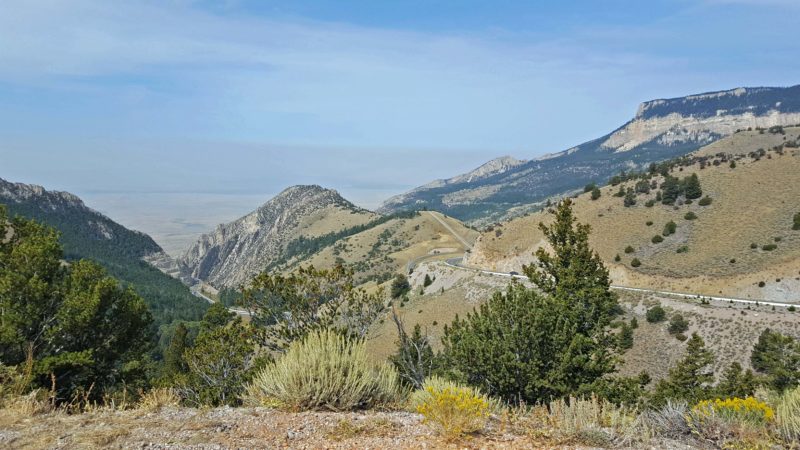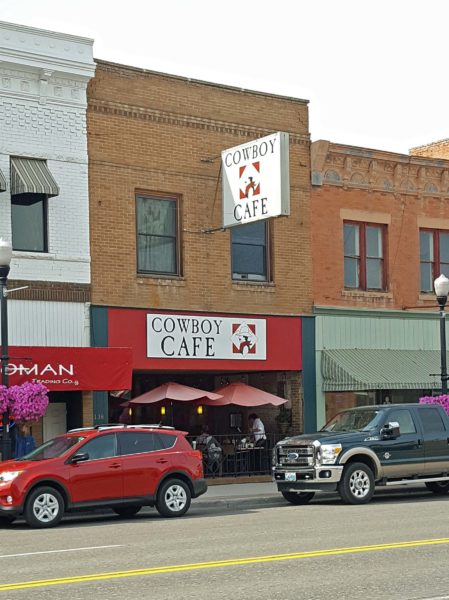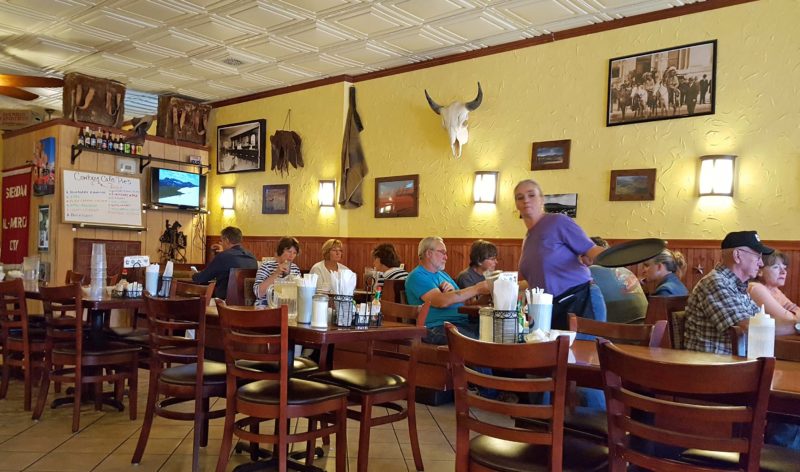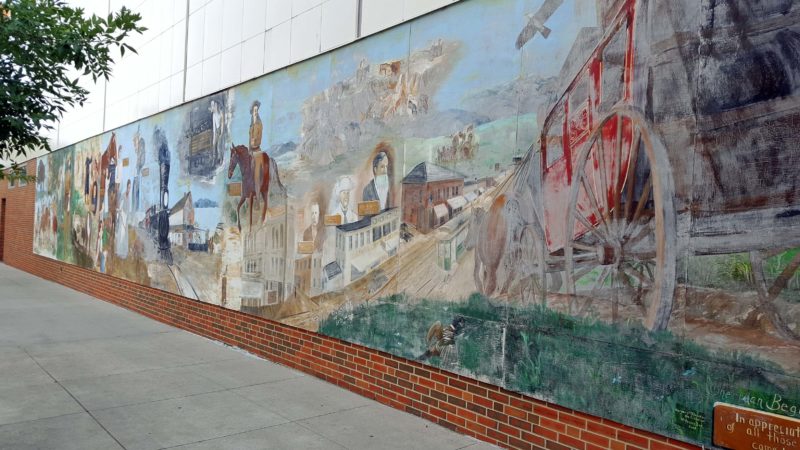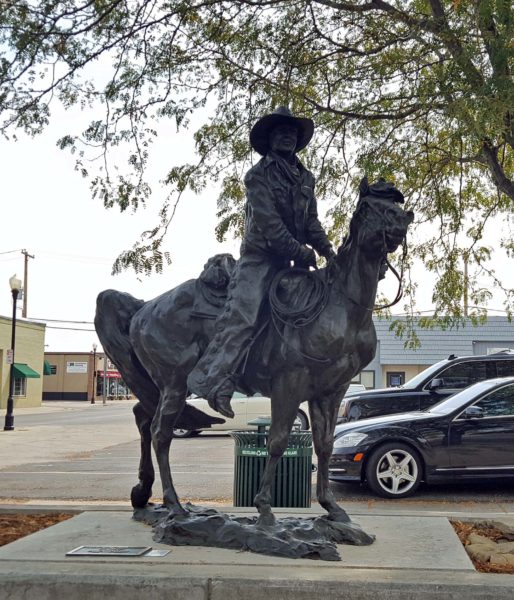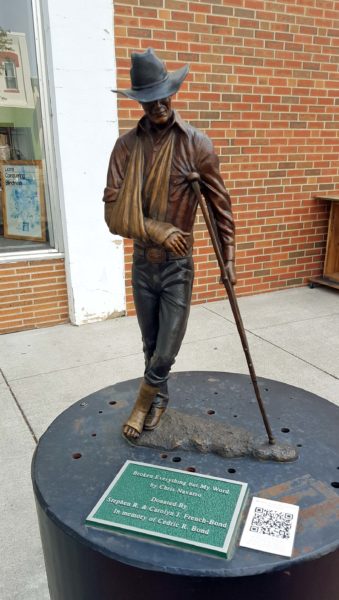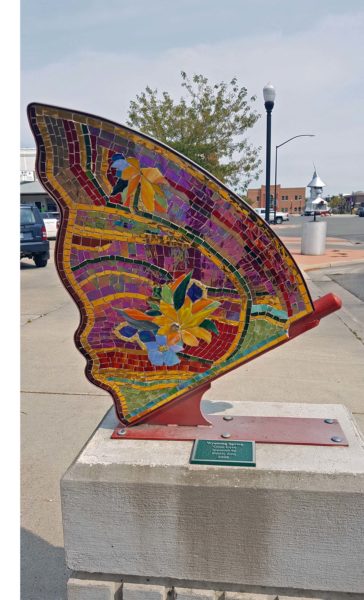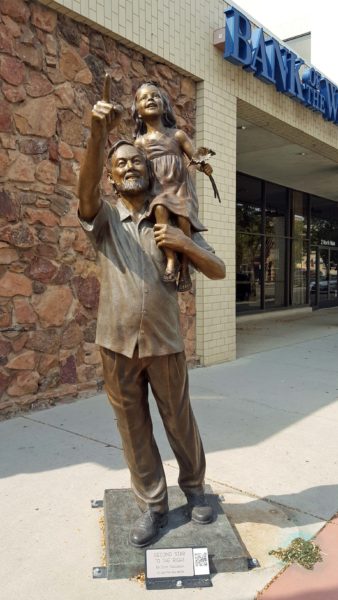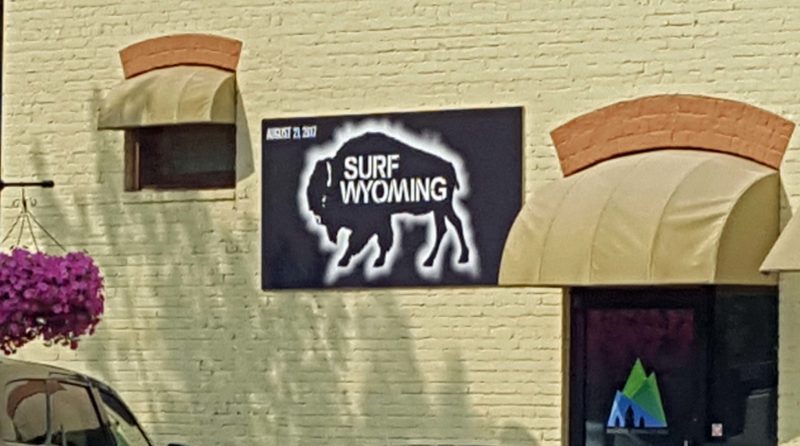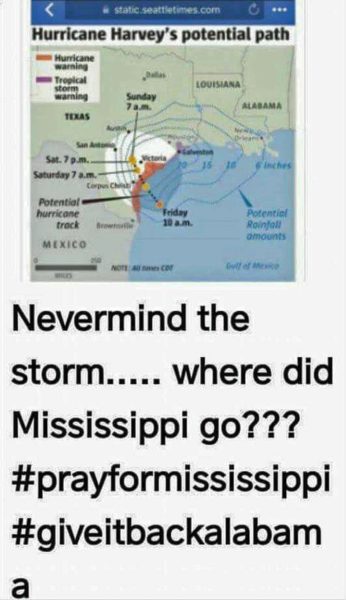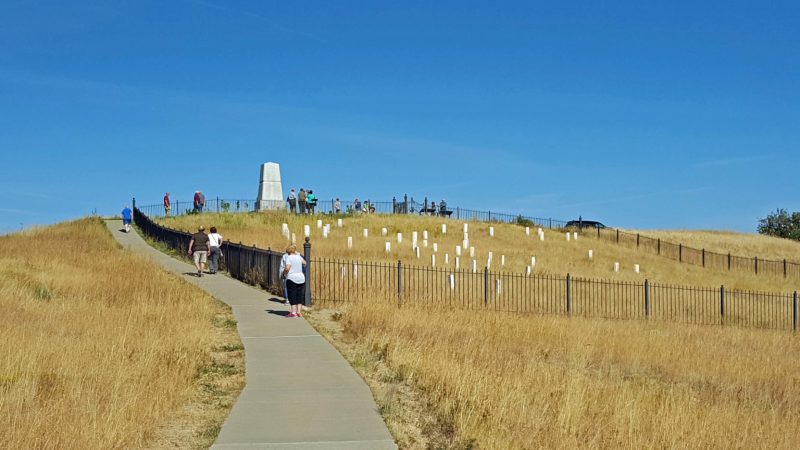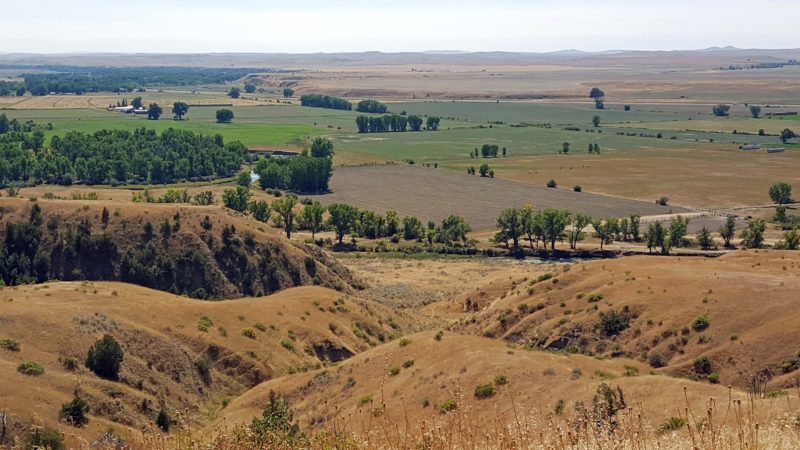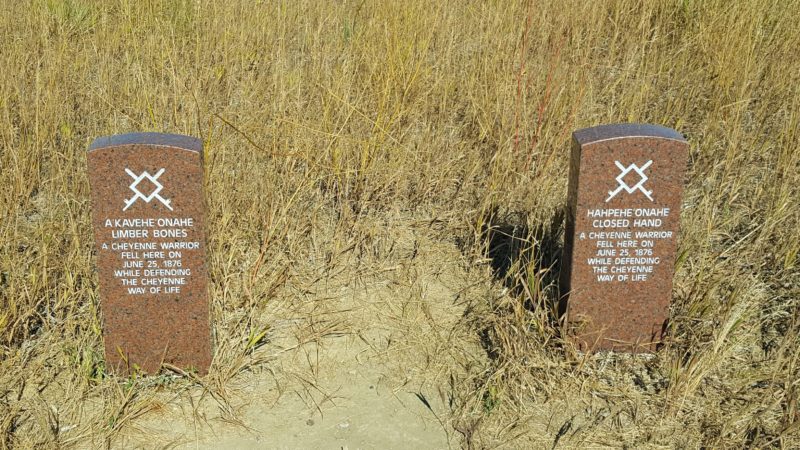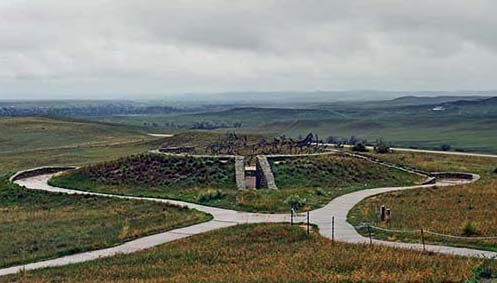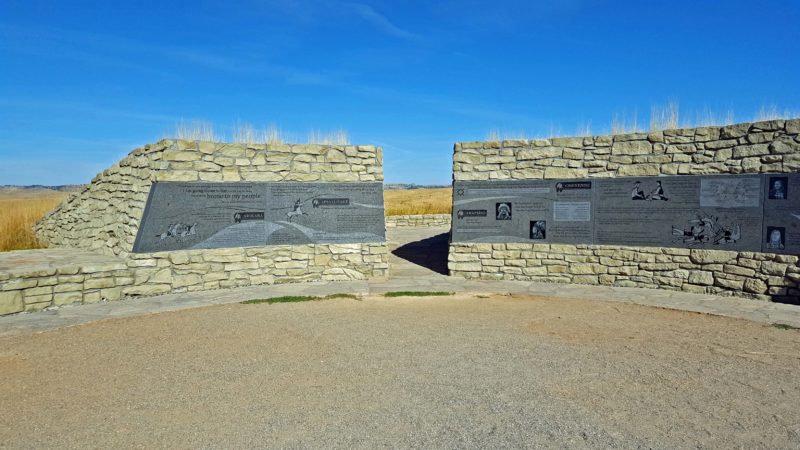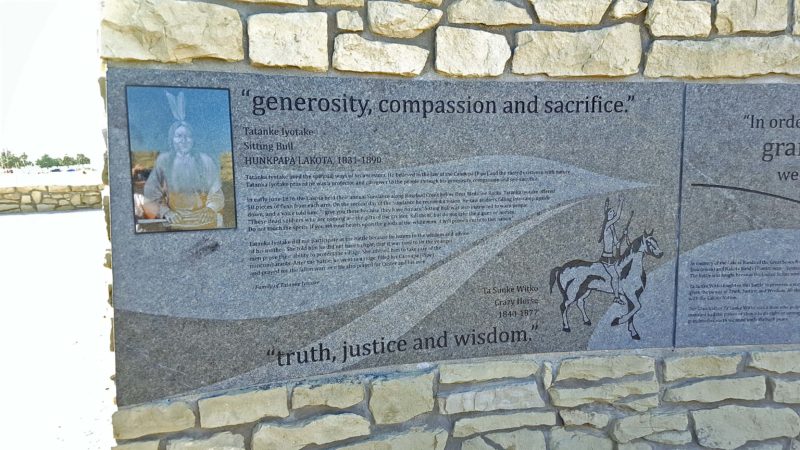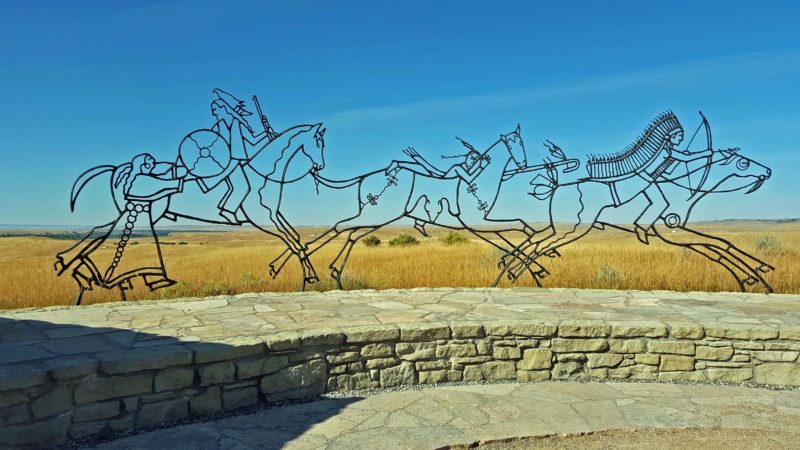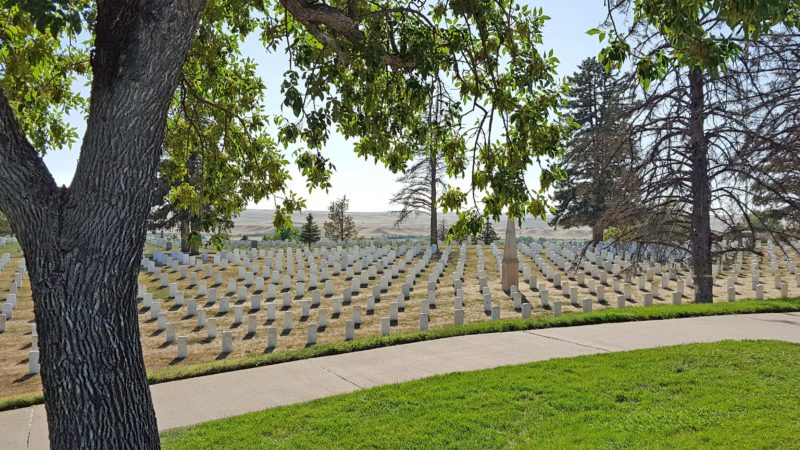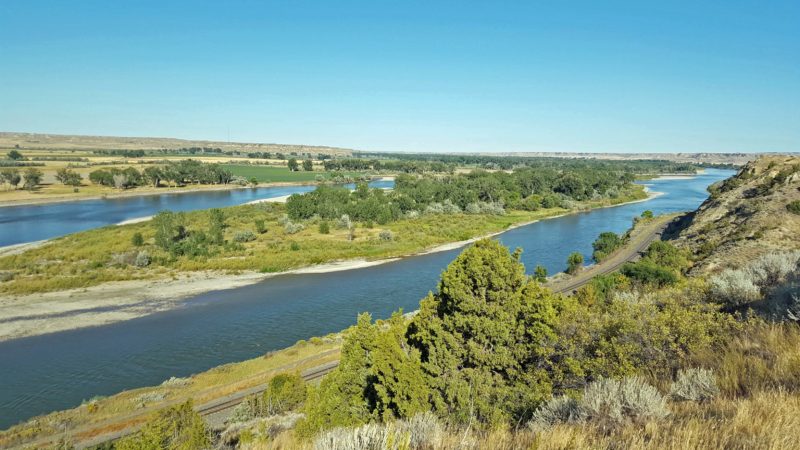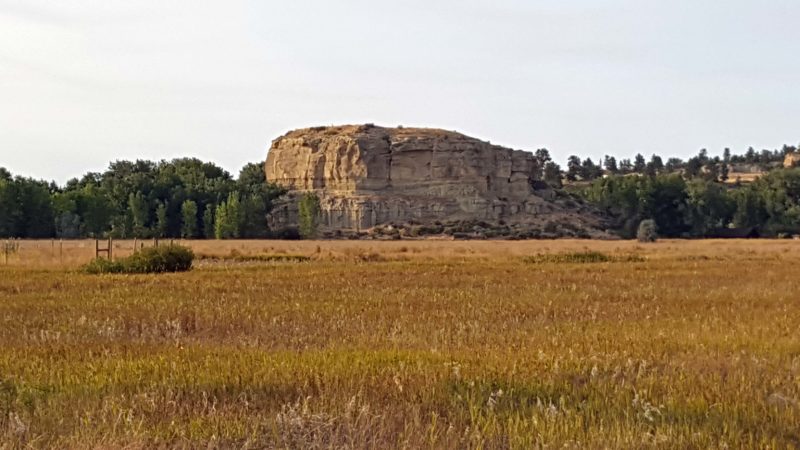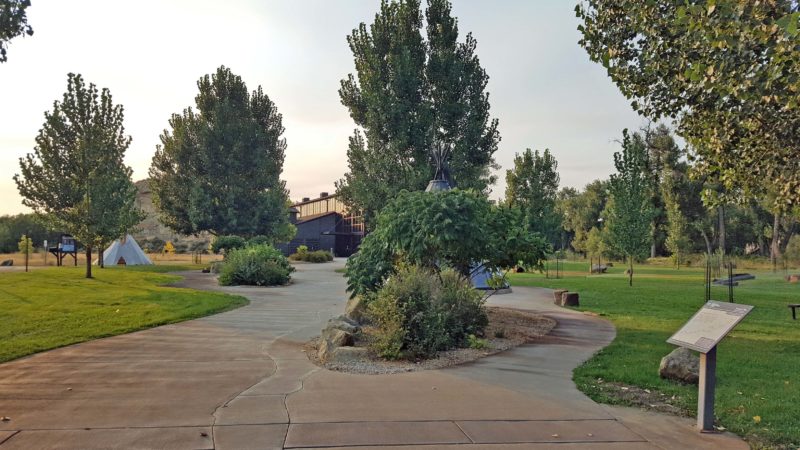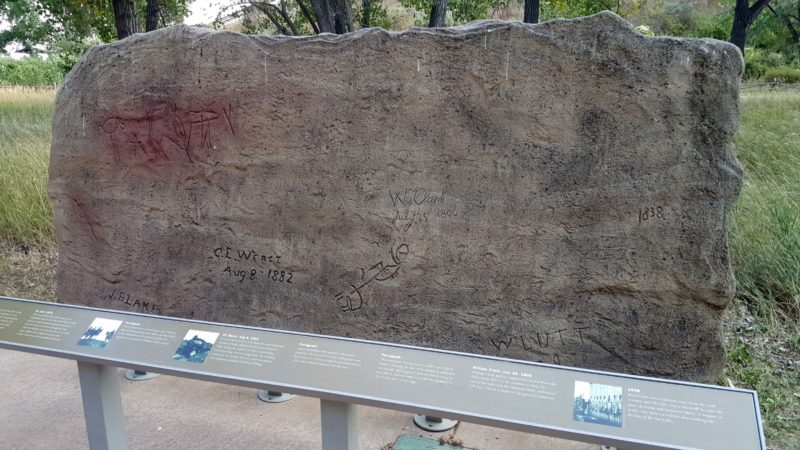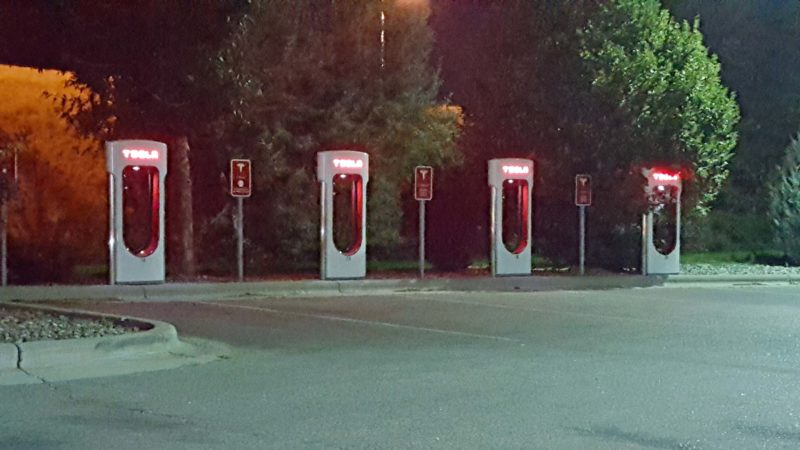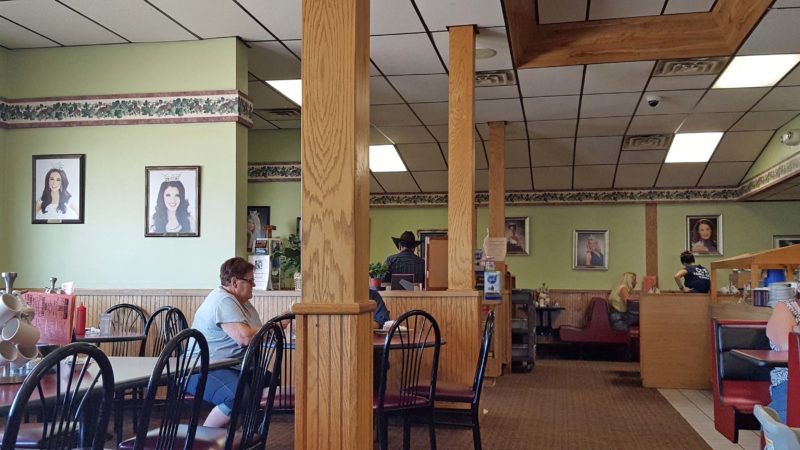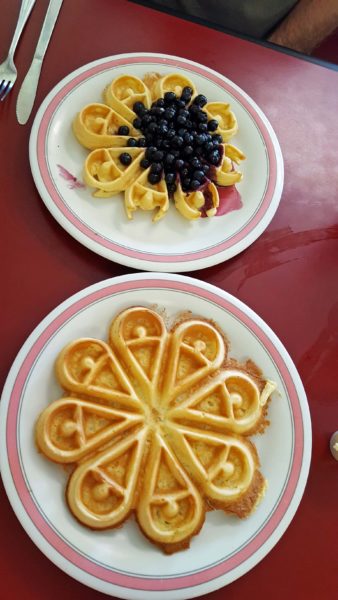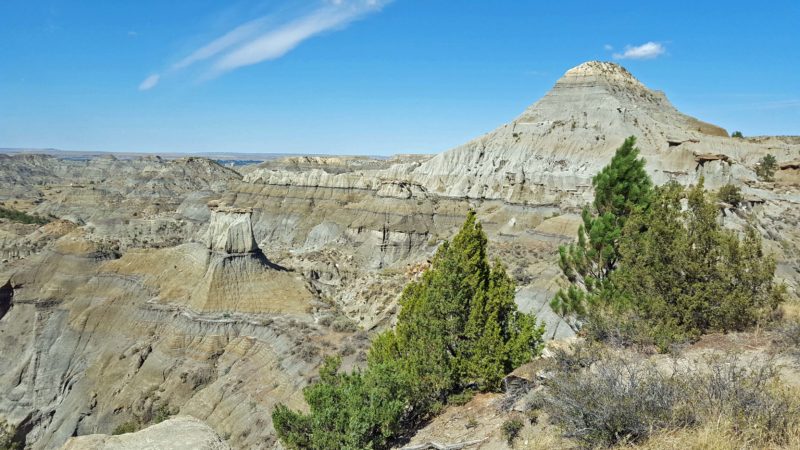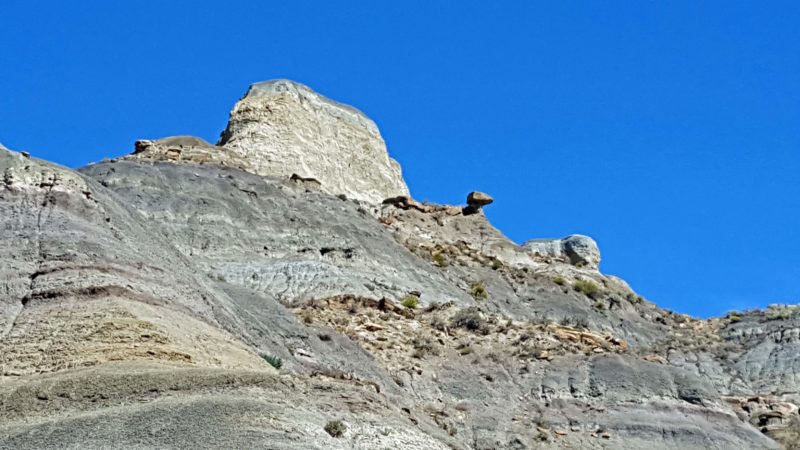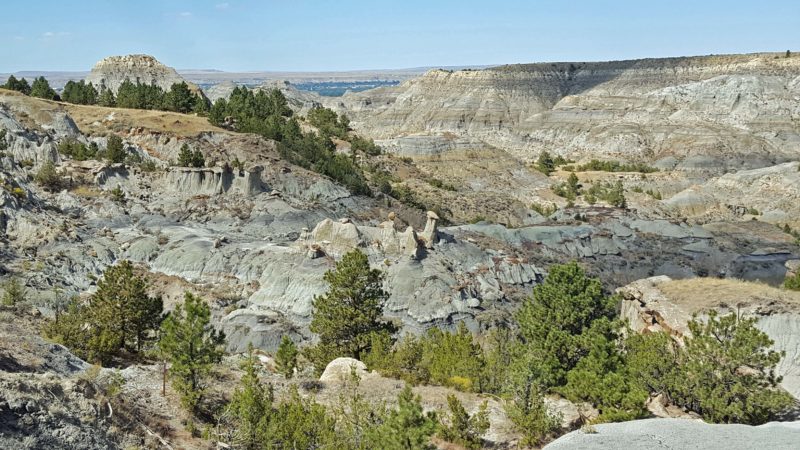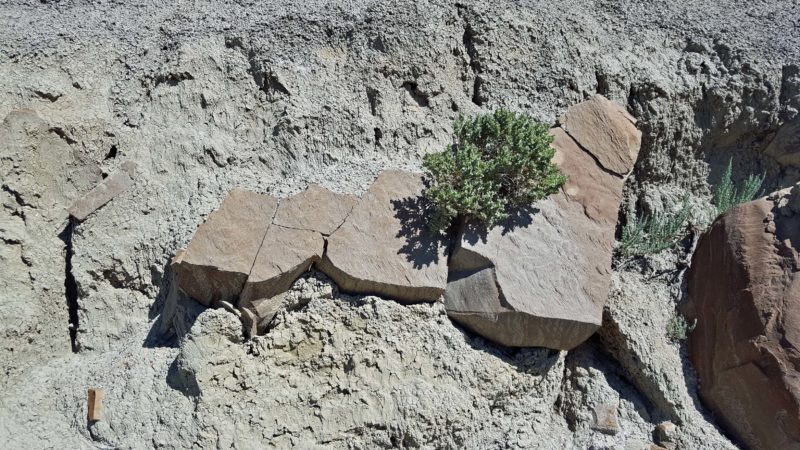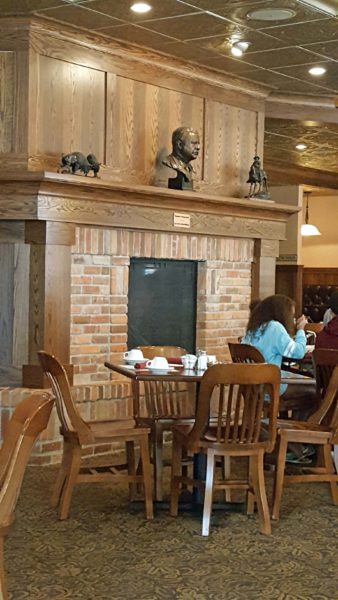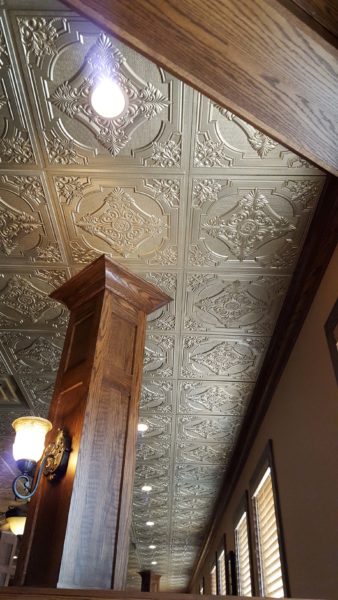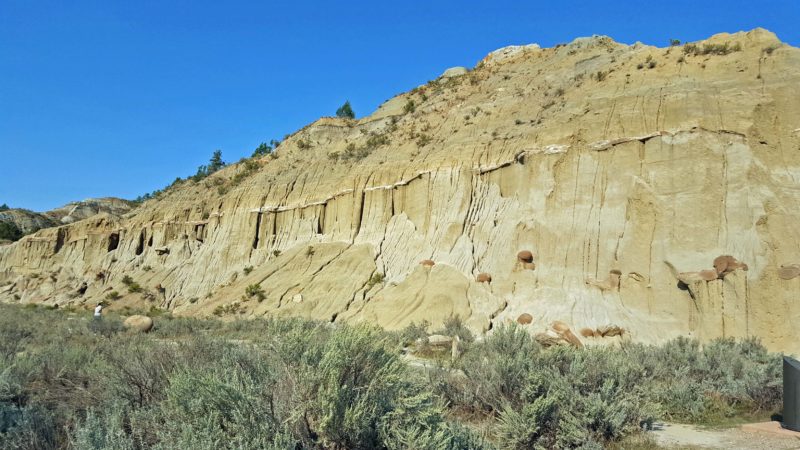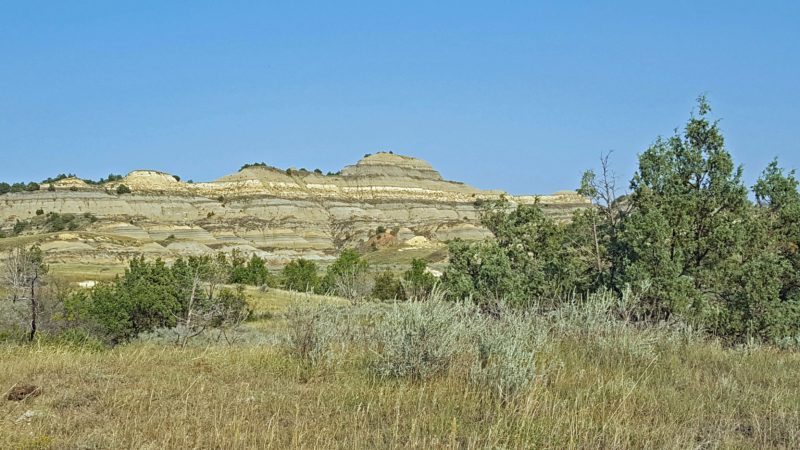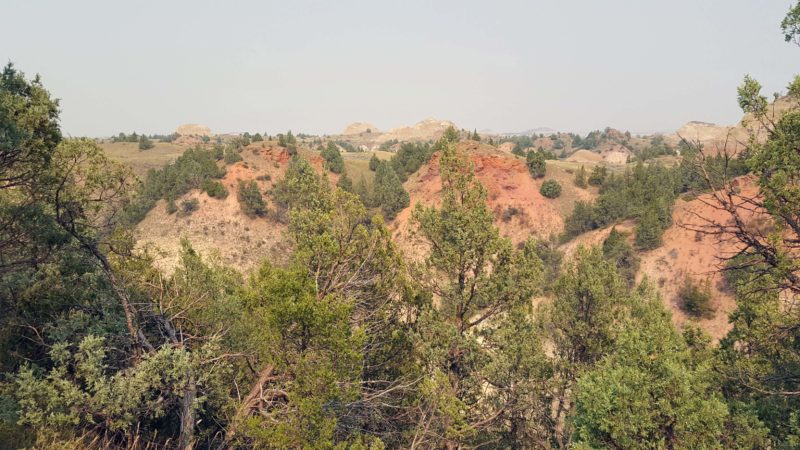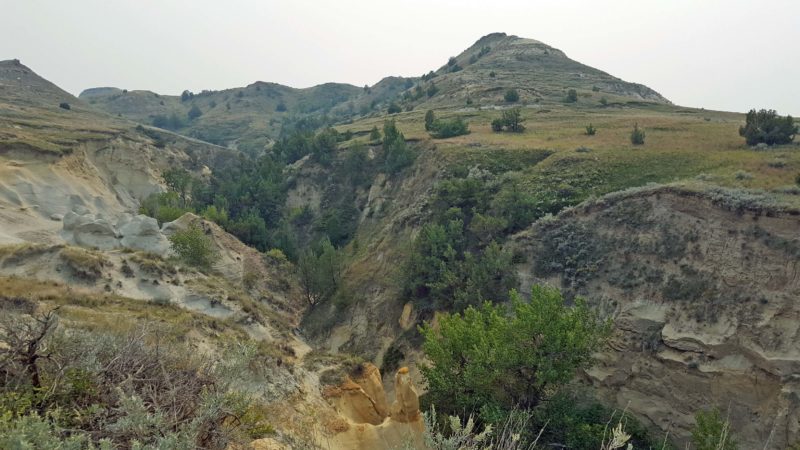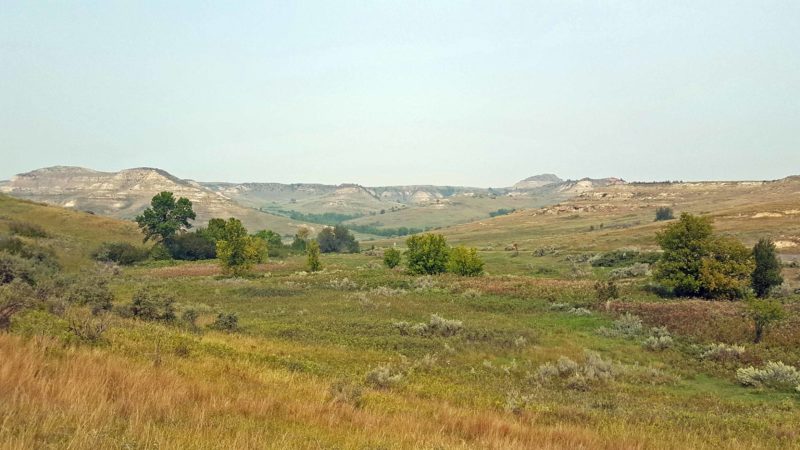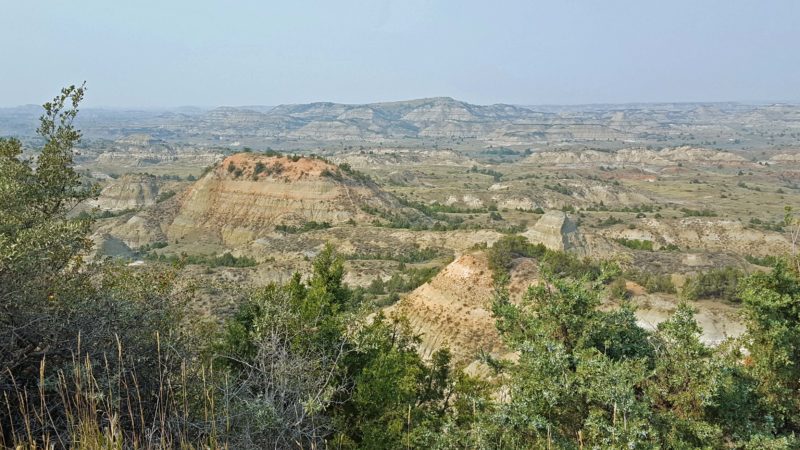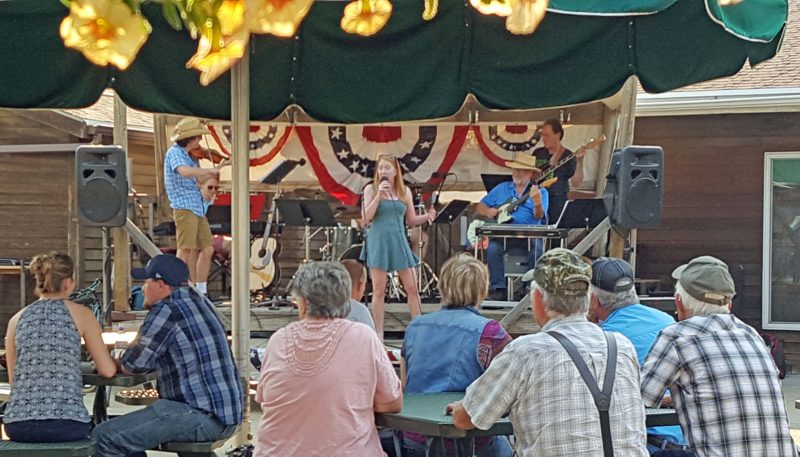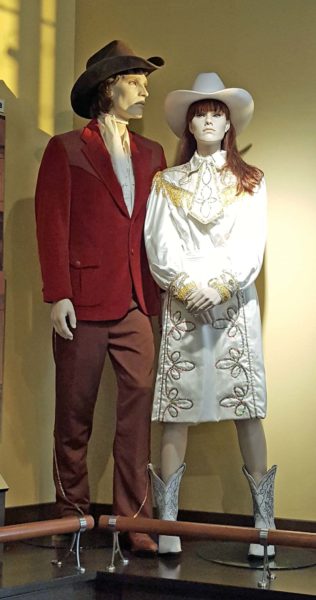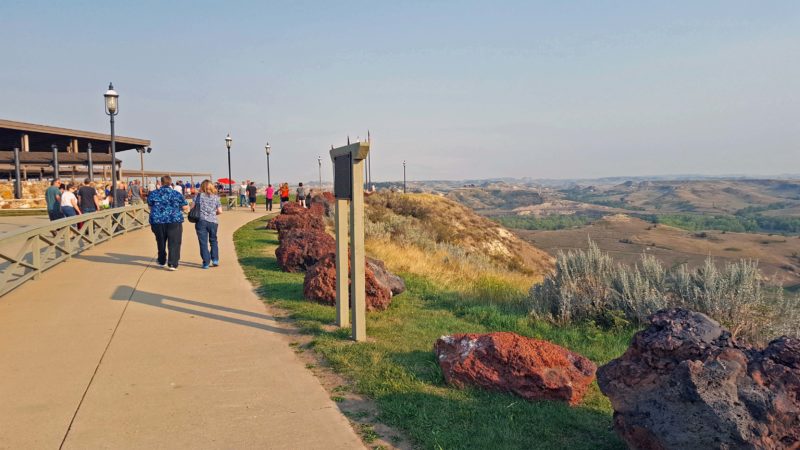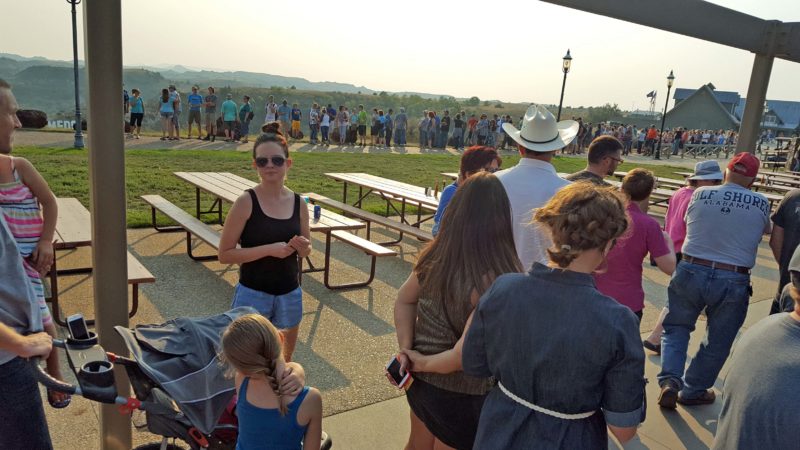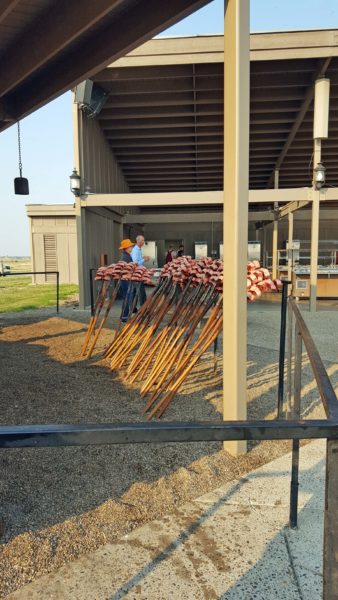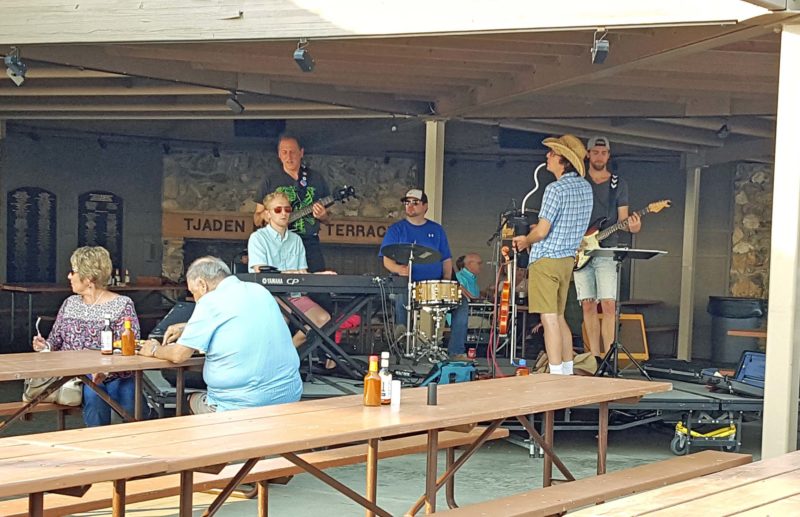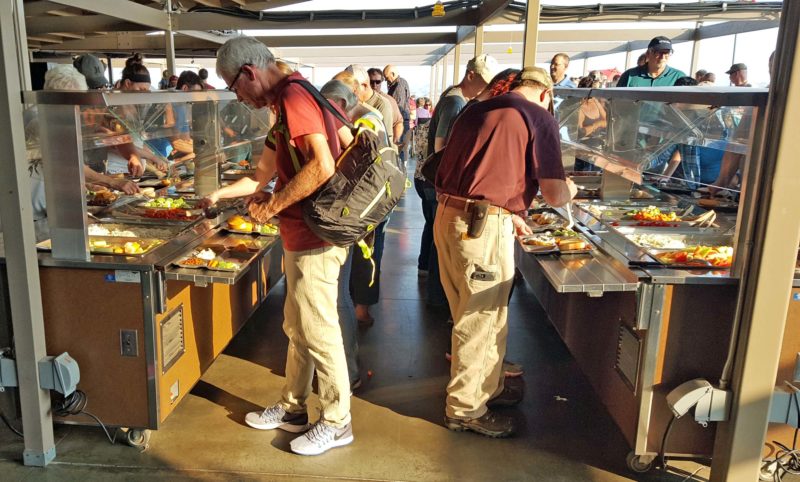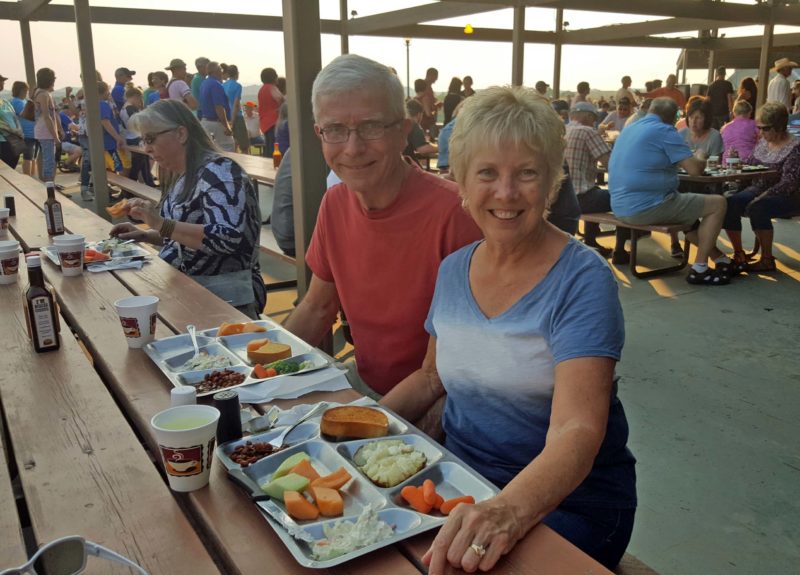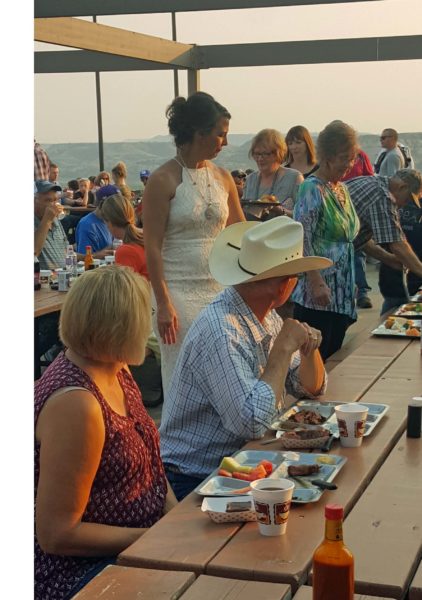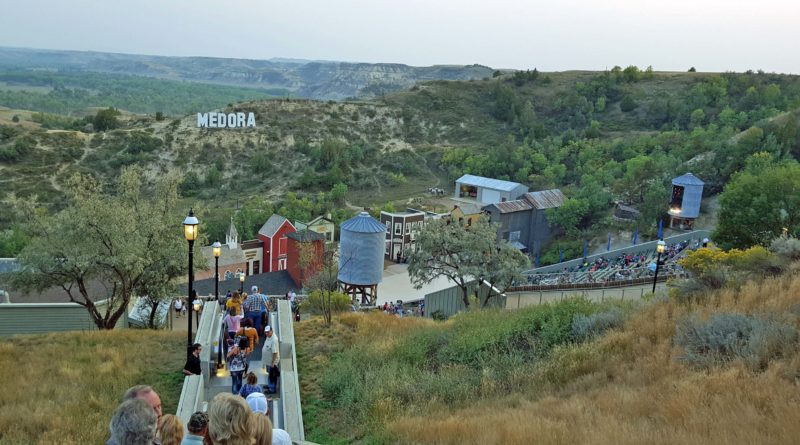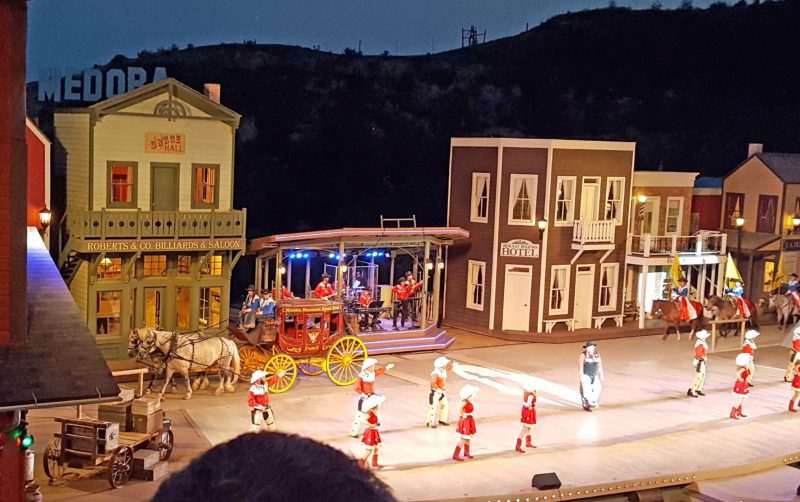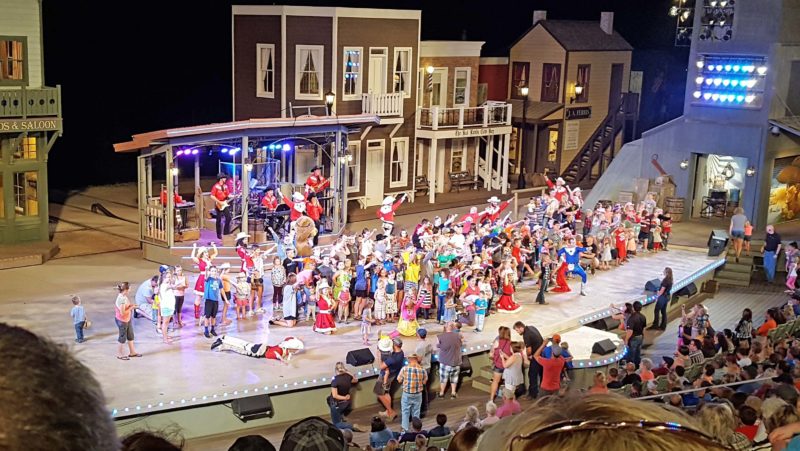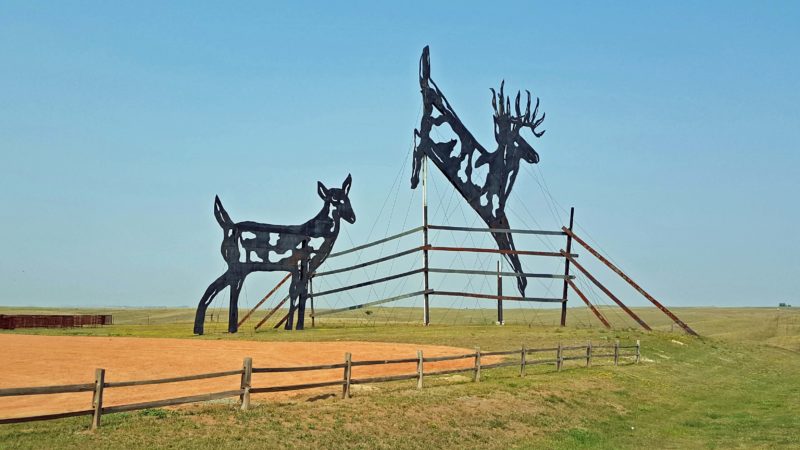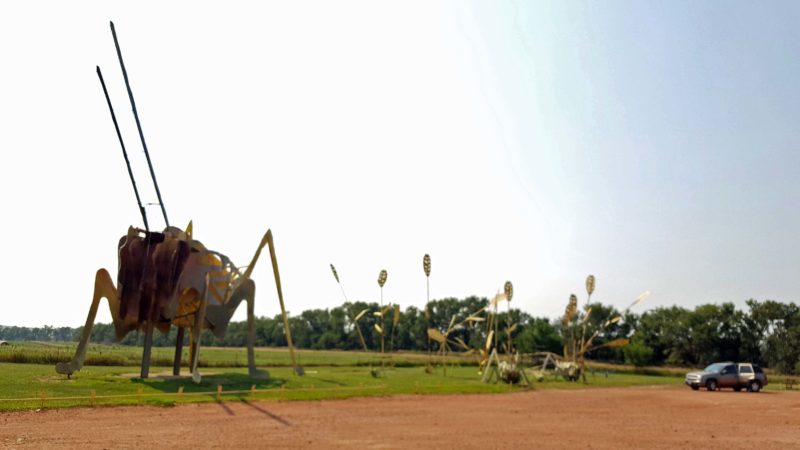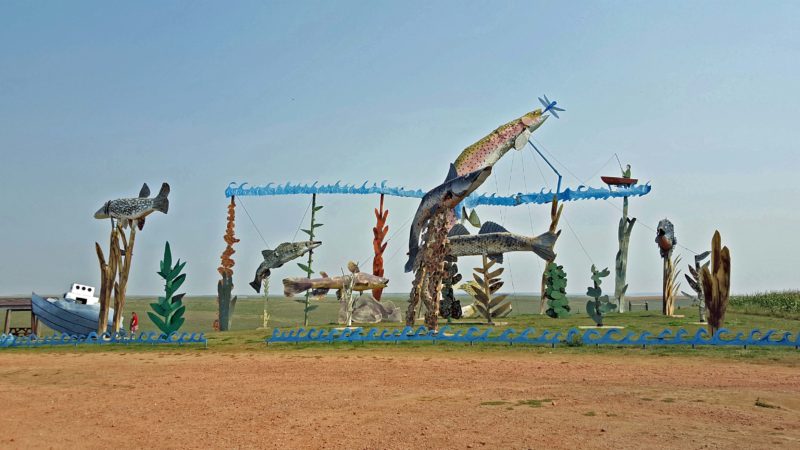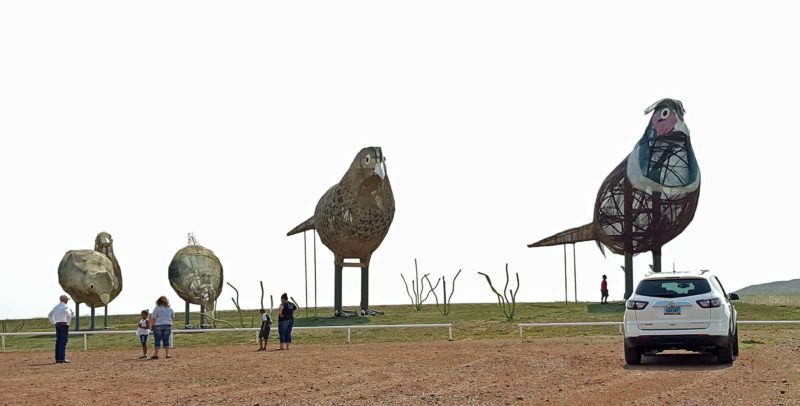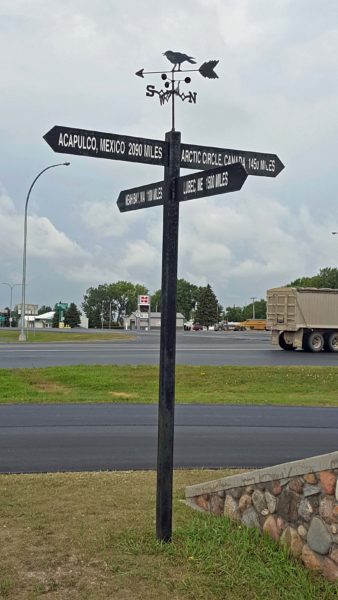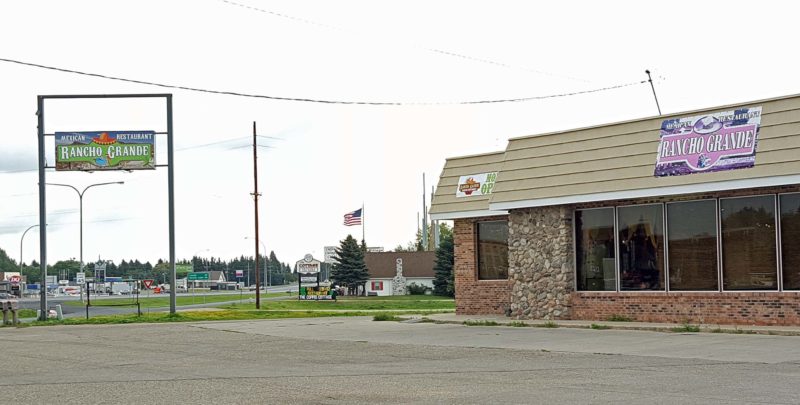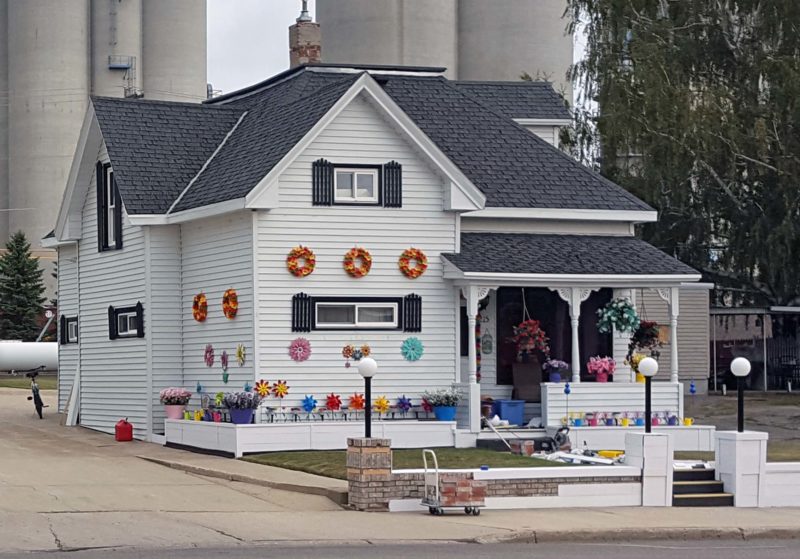The title above is the city slogan (there are T-shirts for sale), as well as a clue to the pronunciation of the city’s name. As we drove to Minot, we couldn’t help noticing the smoke from the Montana wildfires. We’ve seen hazy skies, smog, and red sunsets from the smoke every day, but on some days–like today–the smoke is thicker.
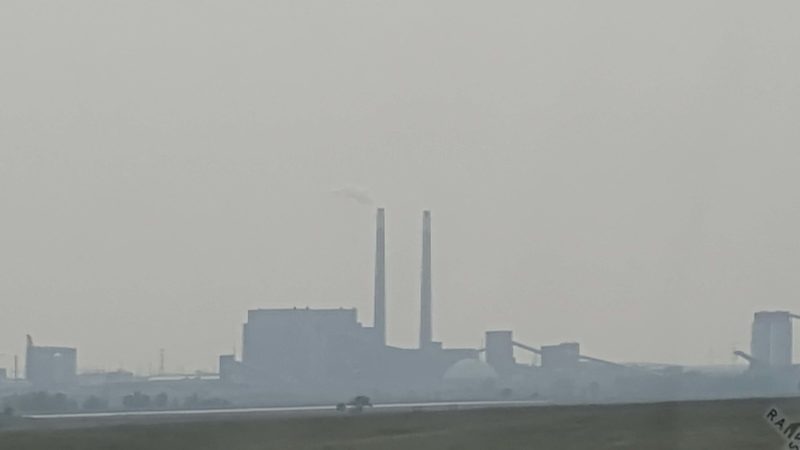
We passed this smoke-shrouded factory along the way to Minot.
We spent about two hours at the Scandinavian Heritage Park in Minot. (Ya, shore, ve vere dare.) I thought the Wisconsin northern accent was strong, but it can’t compare to the folks in the Dakotas. Dakotans all sound like the Canadian professional hockey players on TV. They are also very friendly and like to talk.
We saw signs for ticket purchases, so we thought we needed tickets to this venue and went into the gift shop to purchase them. Discussion with the extremely friendly and talkative staff provided the information that a major festival is coming up in about a week and tickets are required for some of the festival events, but not for the park.
While we were talking with one of the ladies, she asked if we’re going to Medora. Everyone in North Dakota seems to want to know if we’re going to Medora. No one ever asks if we’re going to Bismarck or to Rugby or to Fargo. They only want to know if we’re going to Medora. The answer is “yes.” We are going to visit the North Dakota Badlands in Theodore Roosevelt National Park, and the park’s entrance is at Medora. It seemed logical to respond to the repeated query by simply saying, “Yes, we are.”
We will be in Medora tomorrow, so I decided it was time to find out why so many people care if we go there. Well, the chatty lady was eager to tell us that the music festival in Medora has a performance every summer night, and this is the last week of performances. The show is brilliantly named the Medora Musical and includes a Pitchfork Steak Fondue. It is apparently a Big Deal. (Note: What else could we do? When we arrived at our hotel, we went online and bought tickets to the Pitchfork Steak Fondue and the Medora Musical. Now we know where we’ll eat dinner and how we’ll spend tomorrow evening.)
But back to Minot. The gift shop was quite interesting and the ladies wanted to make sure we took pictures of the trolls and the stuffed buffalo.
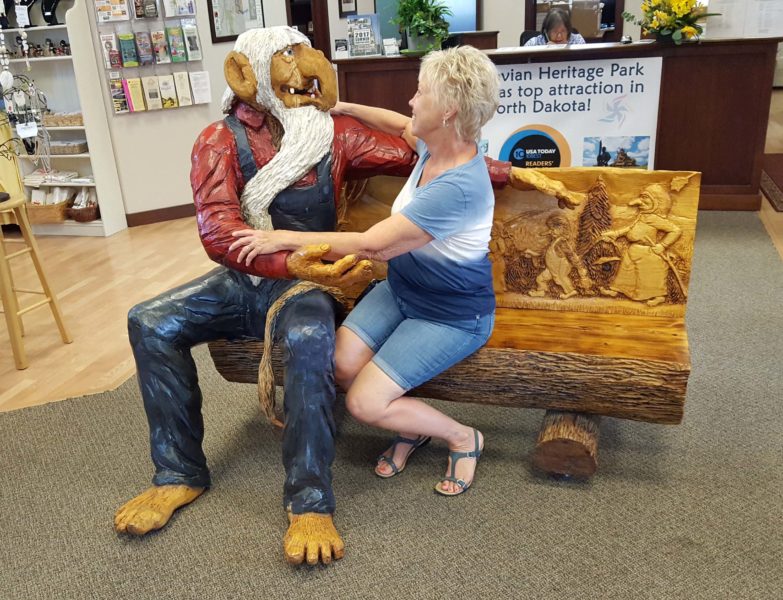
Scandinavians have a troll tradition. We saw trolls everywhere on our Viking Homelands cruise last summer. They supposedly bring good luck, up to a point. I hope I haven’t reached that point.
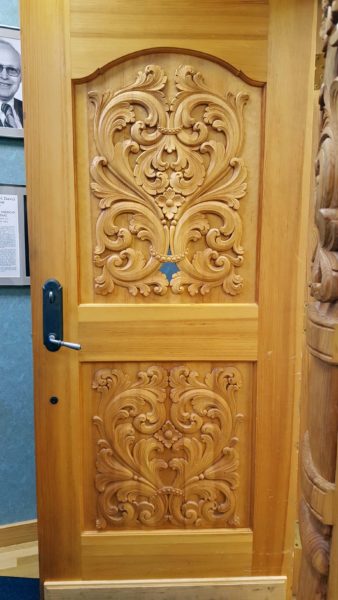
This is one of several beautifully hand-carved doors in the gift shop.
After our lengthy conversations with the gift shop staff, Ted and I started our walk around the grounds. There is a display of the flags of the five Scandinavian countries, as well as a granite map of the Nordic countries. A walking path takes visitors to all the buildings, monuments, and statues in the park.
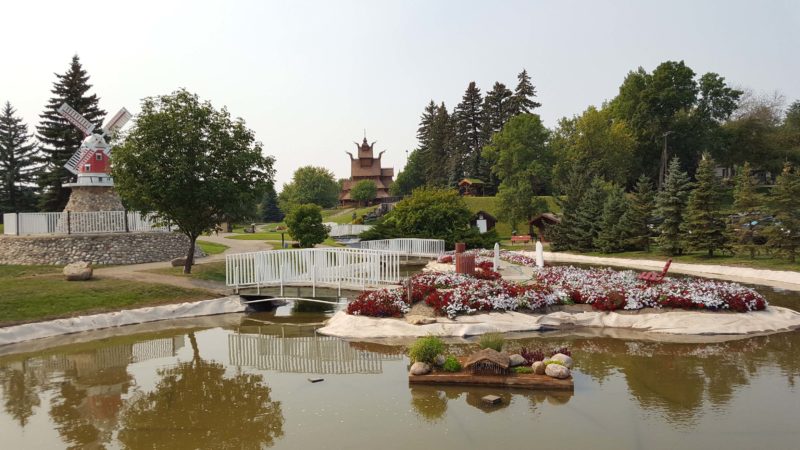
Here’s an overview of part of the grounds with the Gol Stave Church in the background.
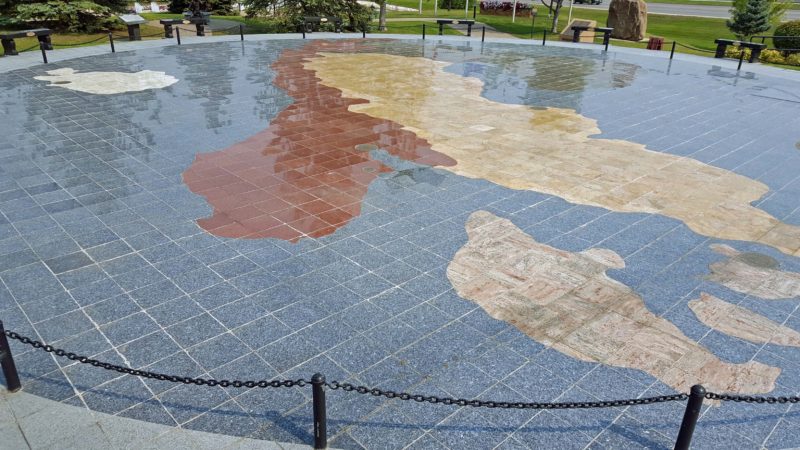
This is the granite map, showing Iceland, Norway, Denmark, Sweden, and Finland (hard to see–it’s green in the upper center).
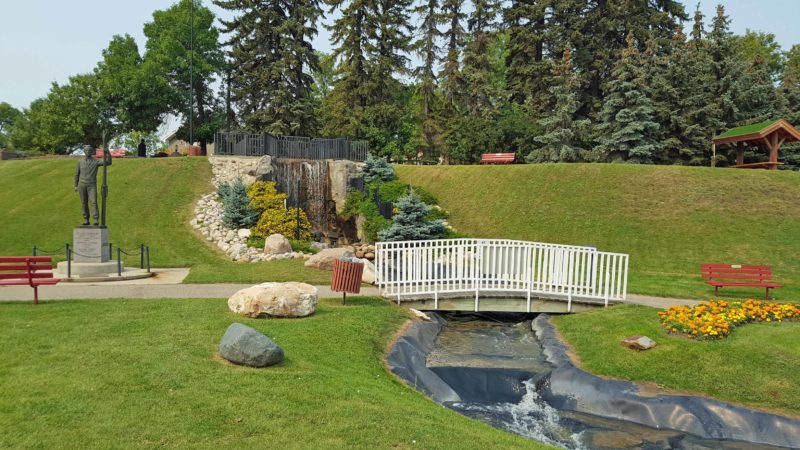
This is another section of the beautiful grounds. The buildings are scattered throughout the park.
We were peeking into one of the reconstructed log houses when a man who’d been sitting outside the house joined us and started telling us all about the house. (The North Dakota men apparently like to talk as much as the women.) He was very informative and we learned a lot about the early pioneer way of life.
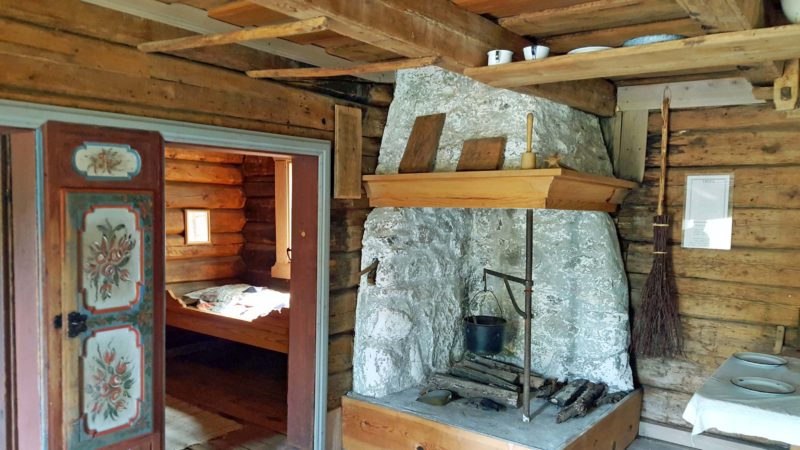
The bars across the ceiling joists in the upper left are for drying clothes in front of the fire in the winter. Notice the rosemaling on the door panels.
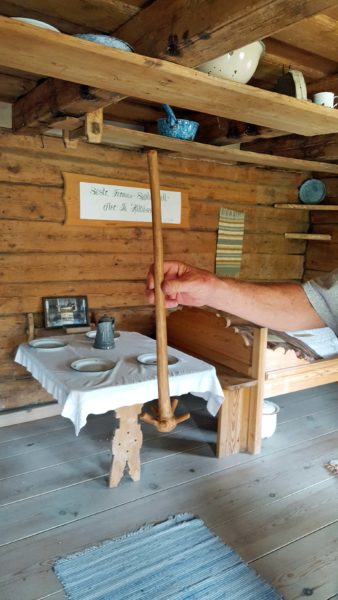
Need to whip some cream? A handy modified pine (?) tree branch quickly rolled back and forth between your hands will do the trick.
The ironing mangle had an interesting story to go with it. Part 1: To iron, place your wrinkled garment on the wooden roller. Then grasp the mangle with both hands–one on each end. Exert pressure on the mangle while moving it back and forth across the roller to smooth out the wrinkles. Part 2: If a young man was courting a woman and was interested in marrying her, he made an elaborate mangle and left it on her doorstep. If the mangle was gone the next time he walked by, he was in luck; if it was still on the doorstep, he needed to keep looking for a wife.

This is prettier than my steam iron, but I’ll stick with steam.
The Gol Stave Church is the focal point of the park. It is built without a single nail, and everything about its design is symbolic. I can’t remember it all, but the inside is built in three sections–the sanctuary, the nave, and the altar–to represent the Holy Trinity. The four large posts supporting the roof represent the four Gospels. The front door is narrow so that only one person at a time can enter, thus making it impossible for the Devil to come into the church. A covered porch surrounds the church and provided a place to leave rifles before entering the sanctuary. There is a gatehouse beside the church, through which people enter for services. You go into the church through the gatehouse for the first time at your baptism; you go out of the church through the gatehouse for the last time after your funeral.
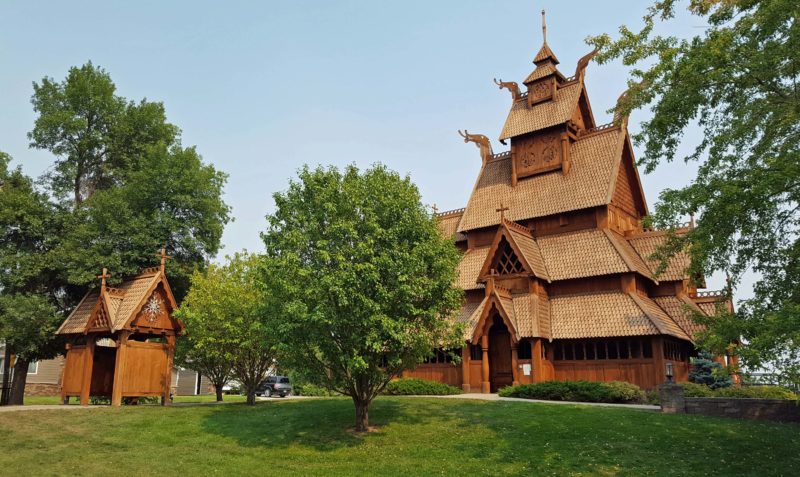
The Gol Stave Church. The gatehouse is on the left.
The Dala (Dalecarlian) horse is a traditional Swedish carved, painted statuette, mostly used as a toy for children. Dala horses have distinguishing features common to the locality of the site where they are produced, but the most common and widespread one is painted bright red with a harness in white, green, yellow, and blue. In modern times, the Dala horse has become a symbol of Sweden.
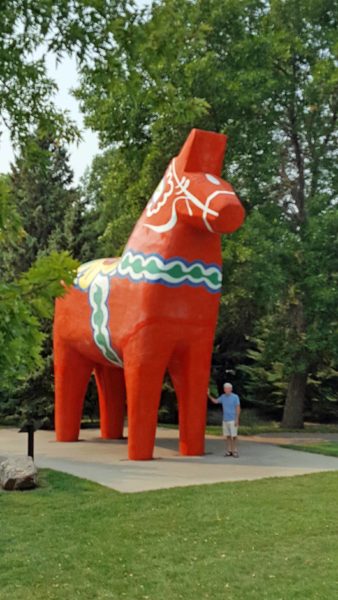
This Dala horse is 27 feet tall. Ted is 6 feet tall.
It wouldn’t be a Scandinavian park without a statue of a Scandinavian hero.
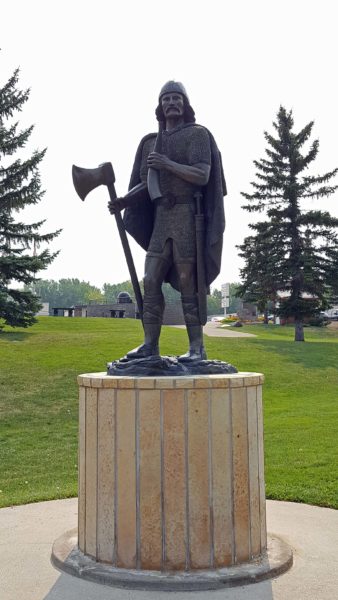
Guess who. Why, it’s Leif Erikson, the Norse explorer from Iceland! He was the first known European to discover continental North America, and he did it nearly four centuries before Christopher Columbus. Definitely worth a statue.
Before leaving the park and driving to our next destination, we naturally used the rest rooms. There was something different in this ladies’ room.
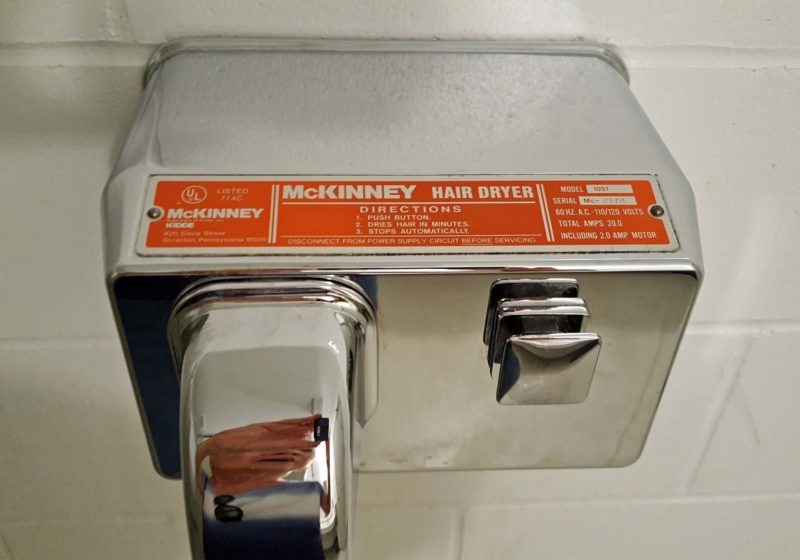
Yes, a hair dryer. With no towels or hand dryer, I admit that I dried my hands with the hair dryer.
